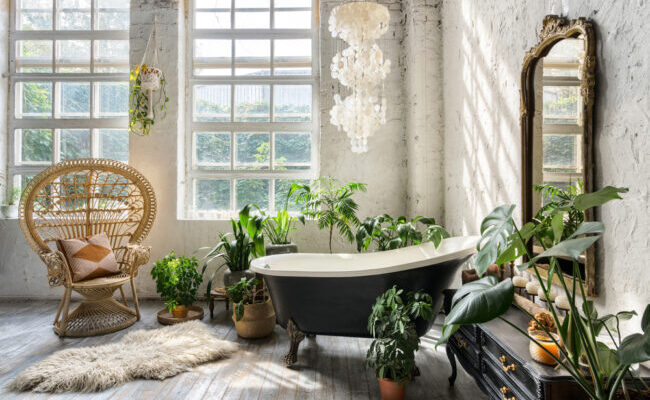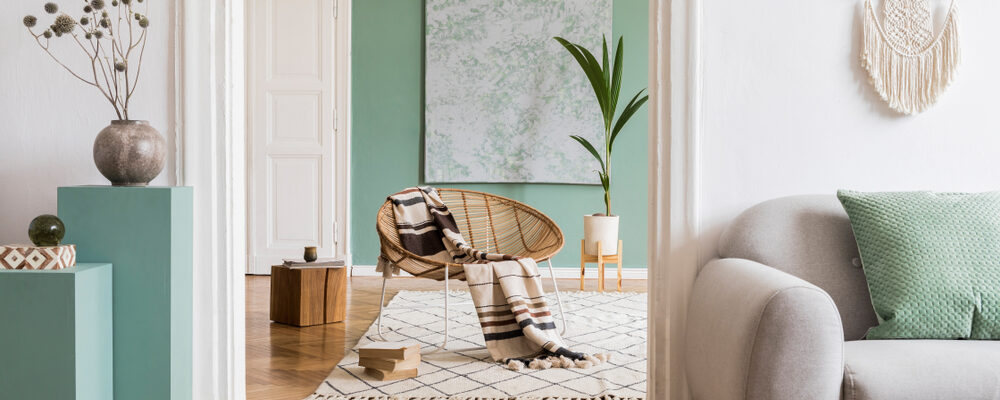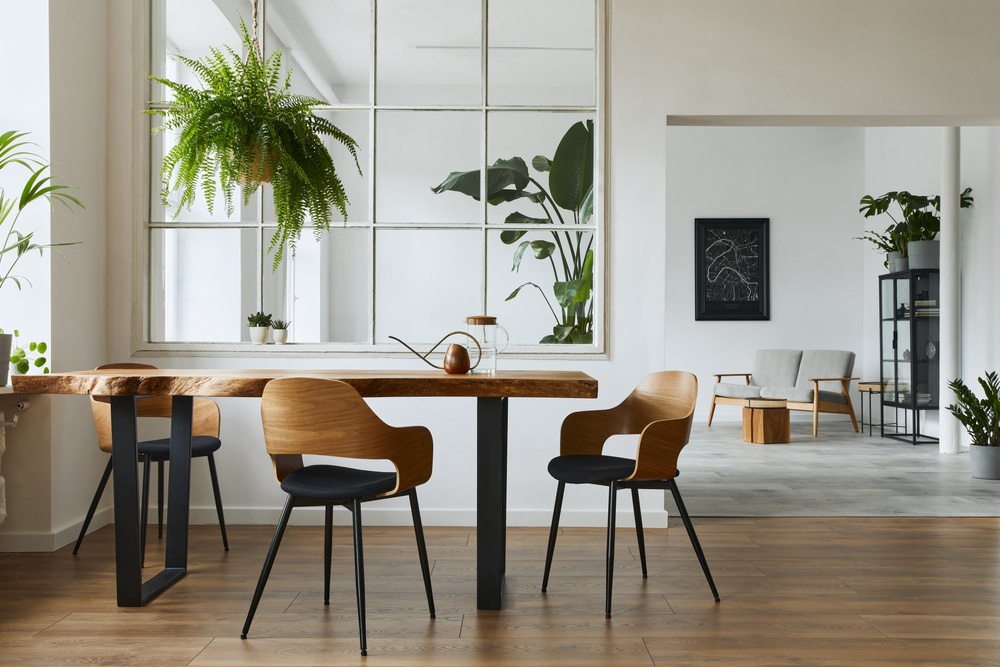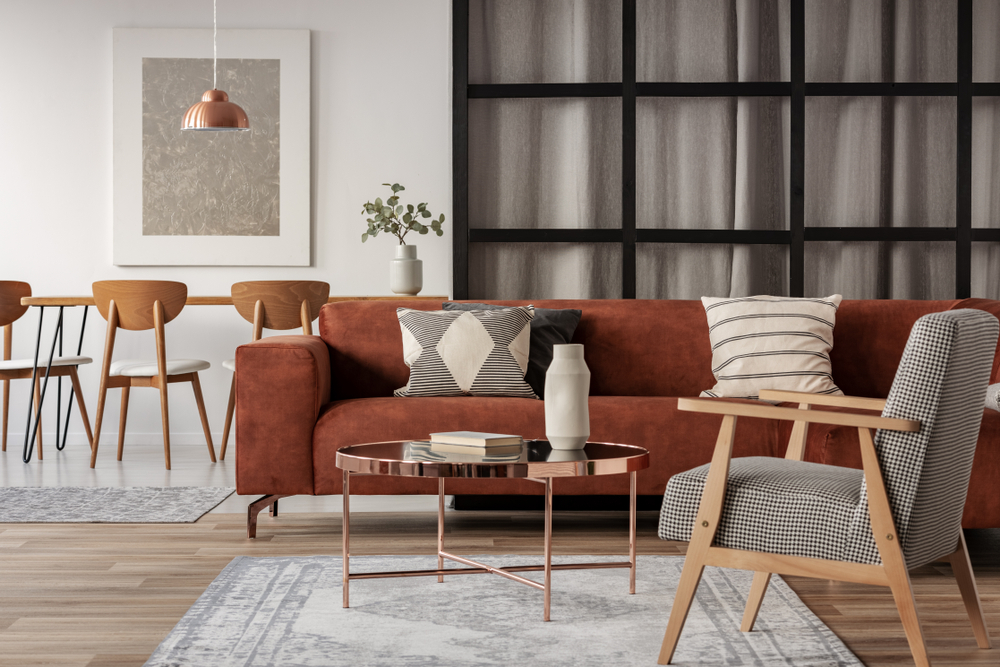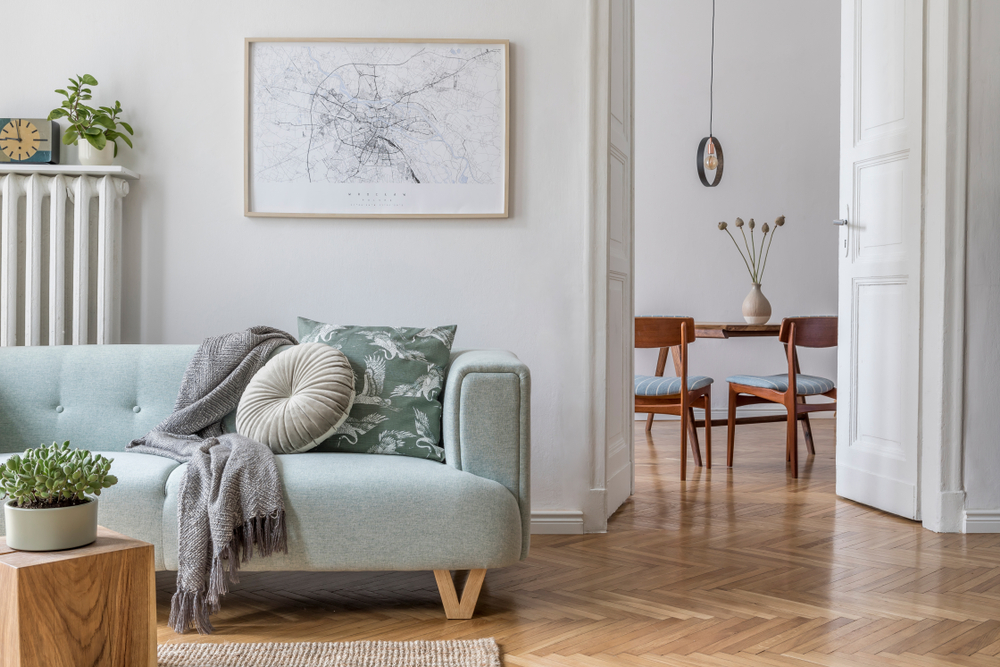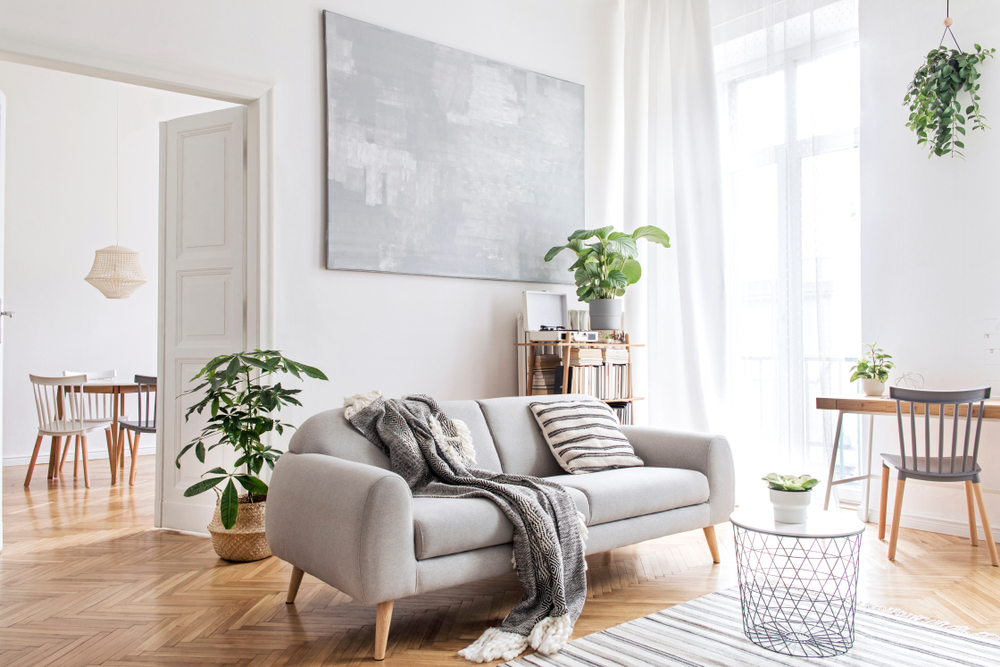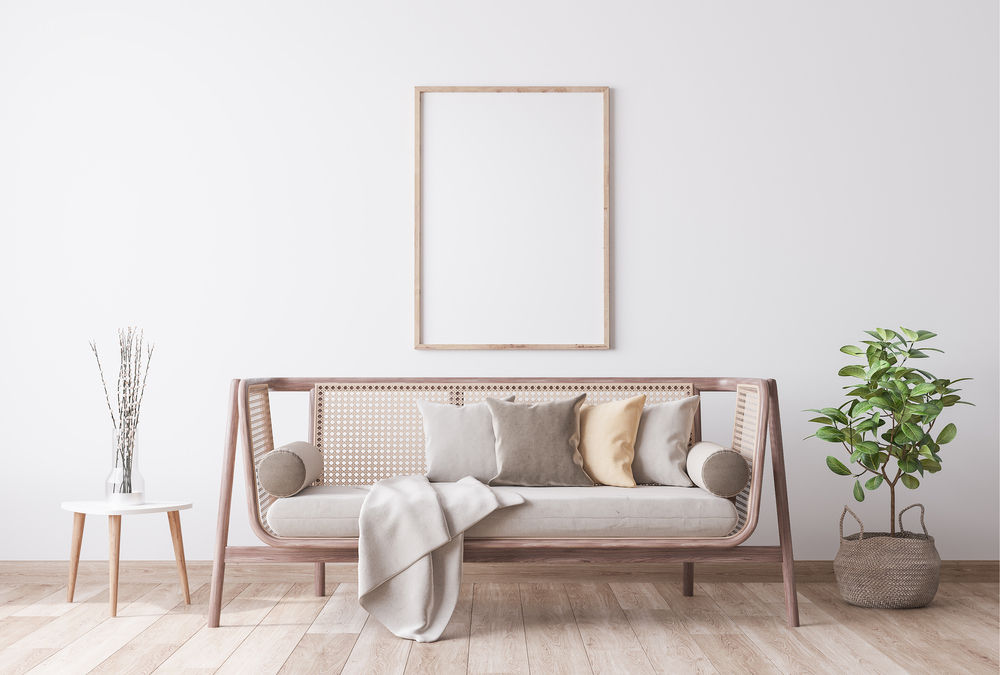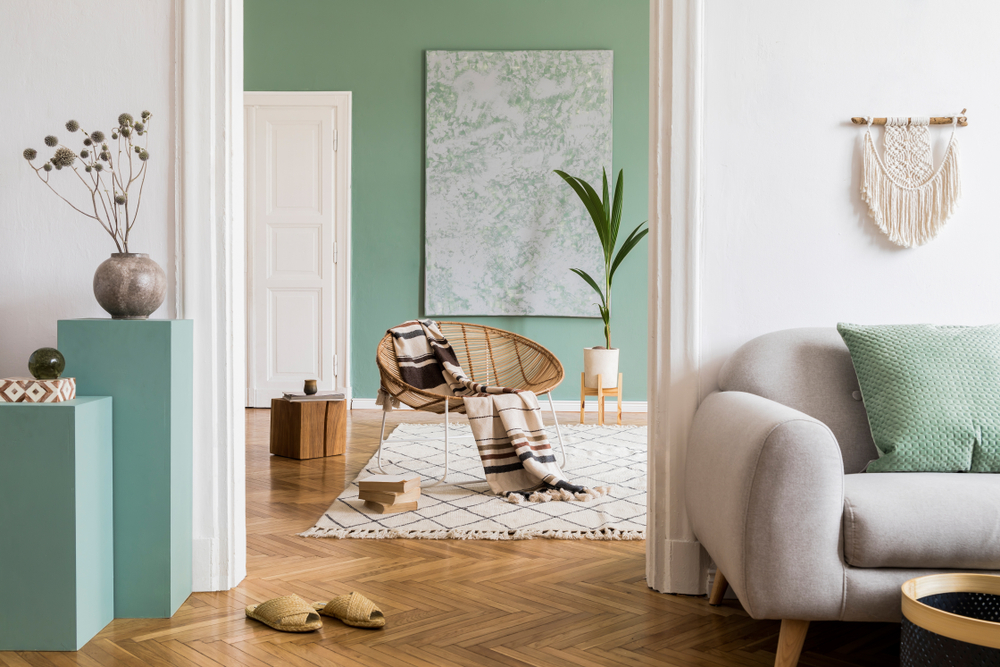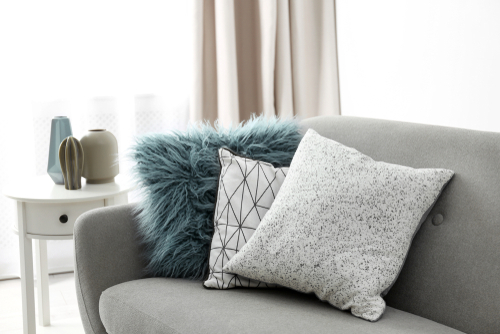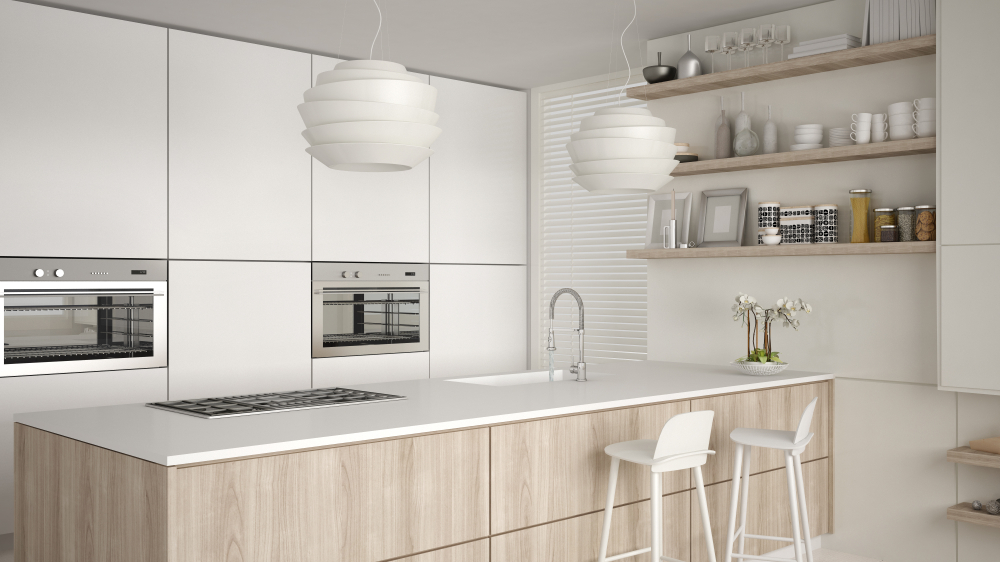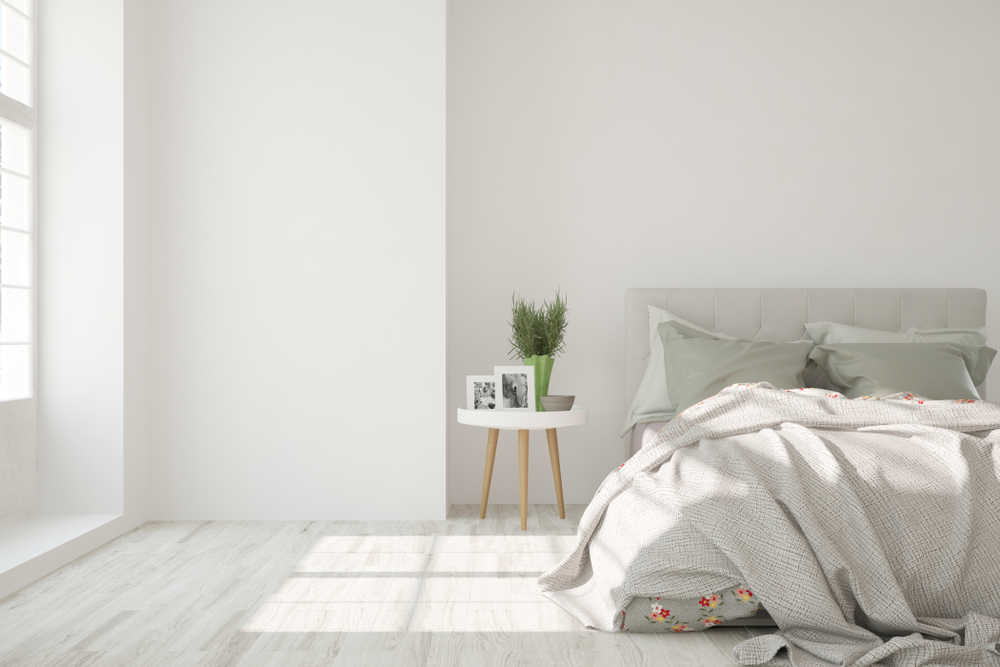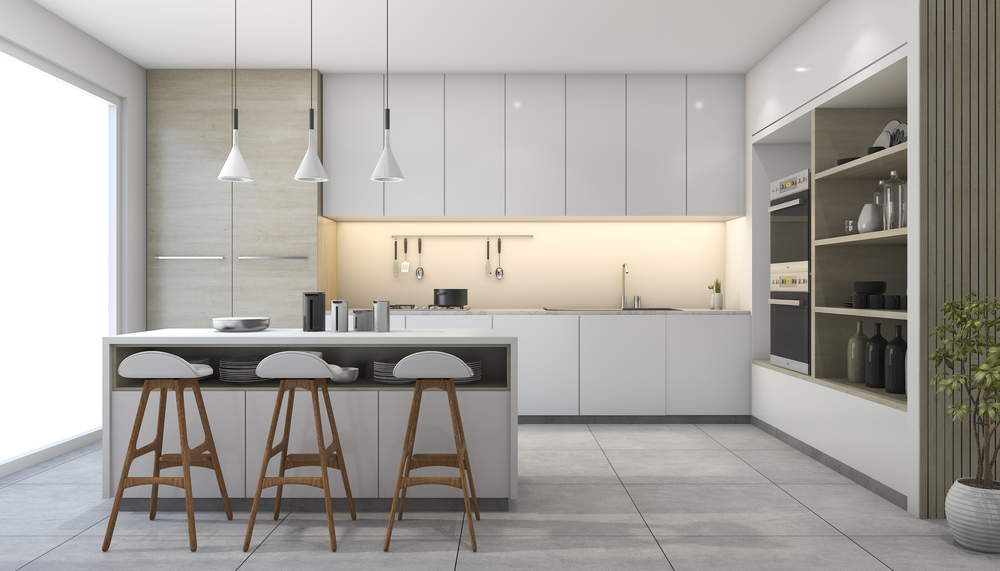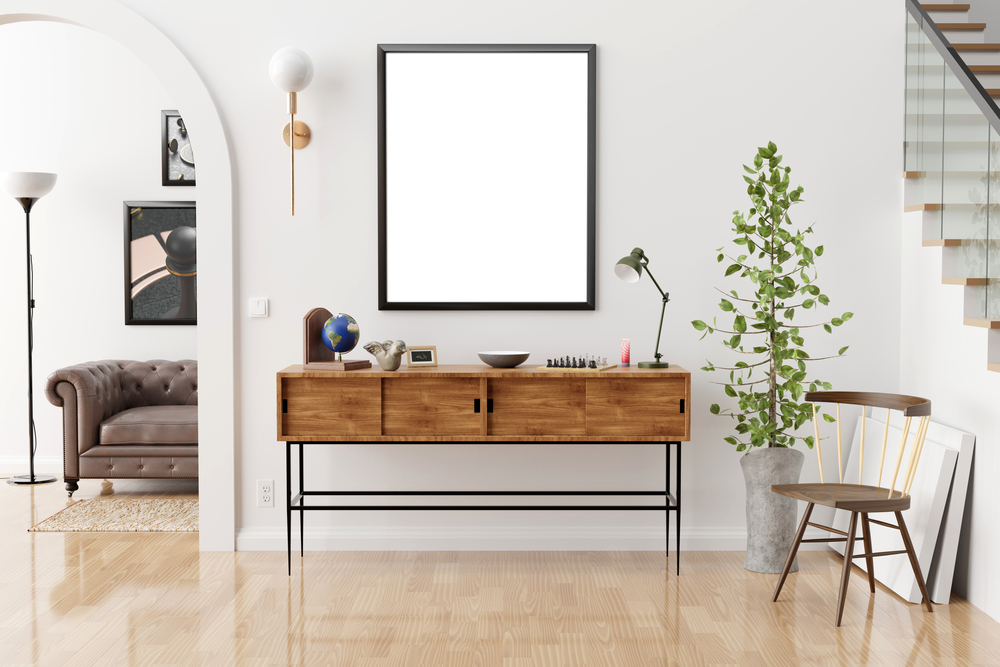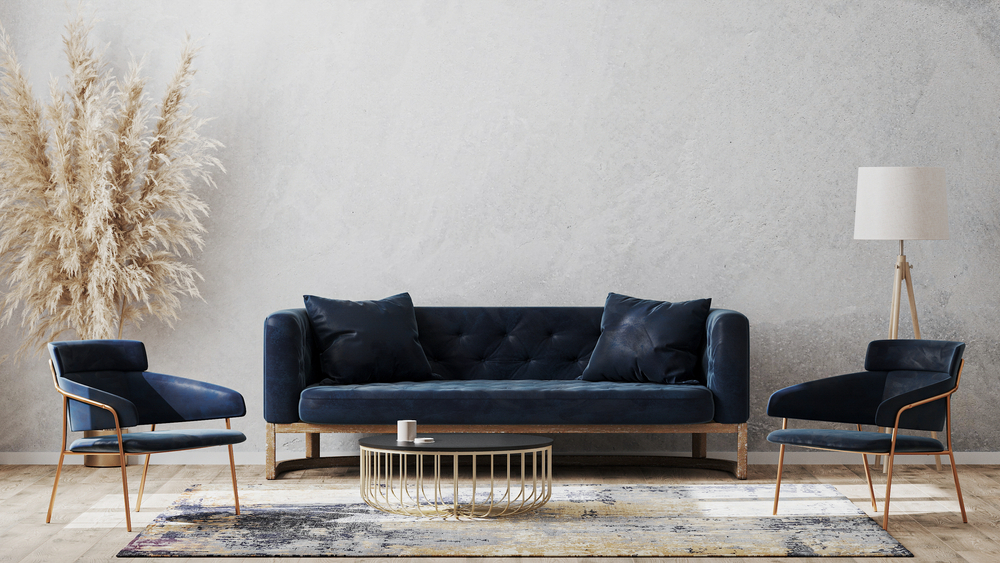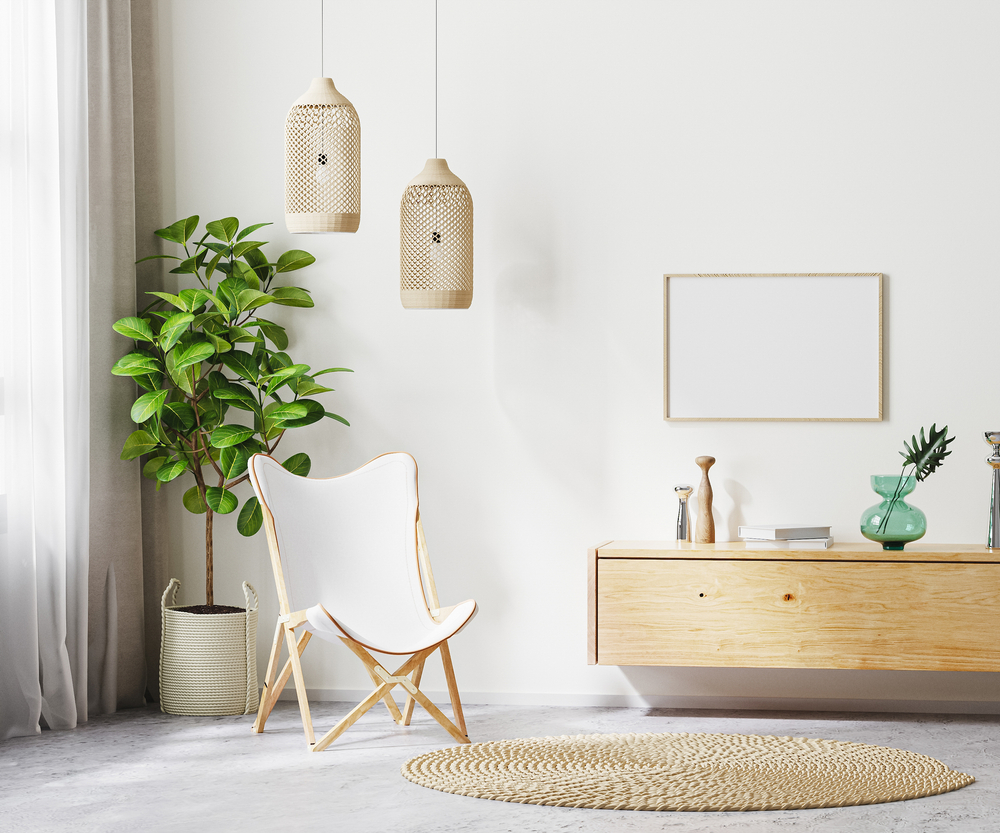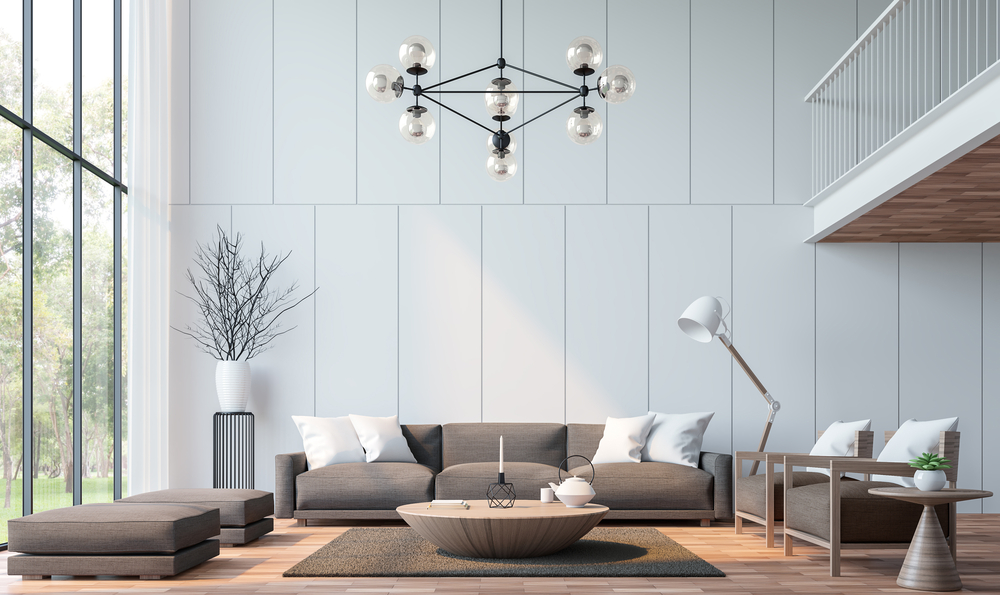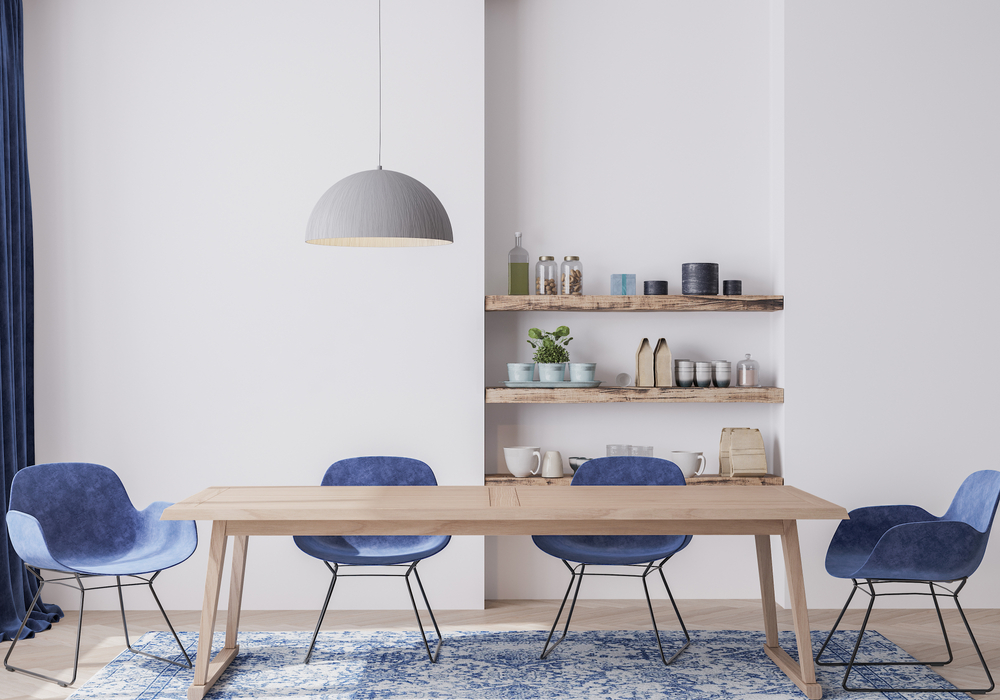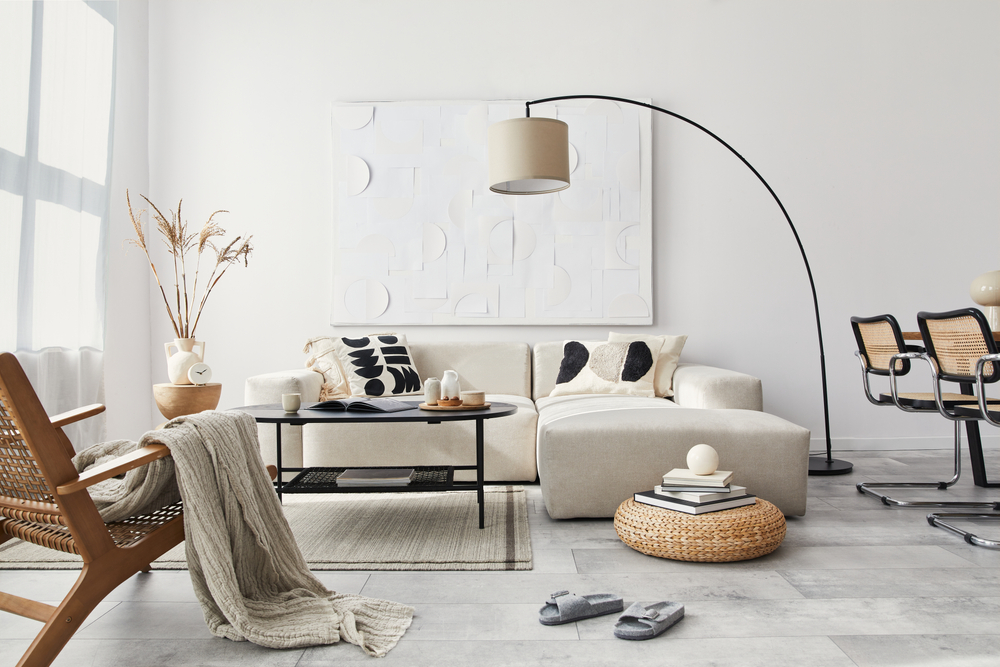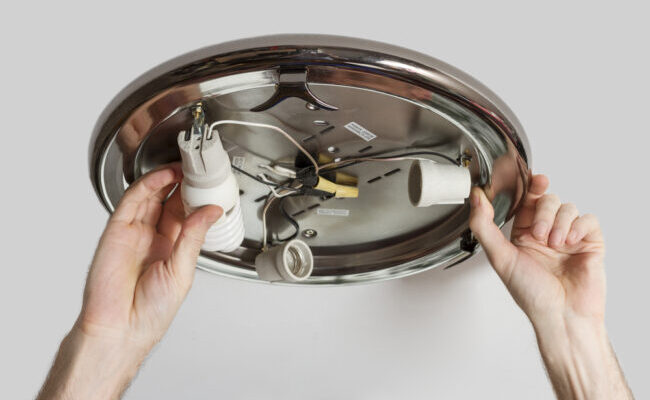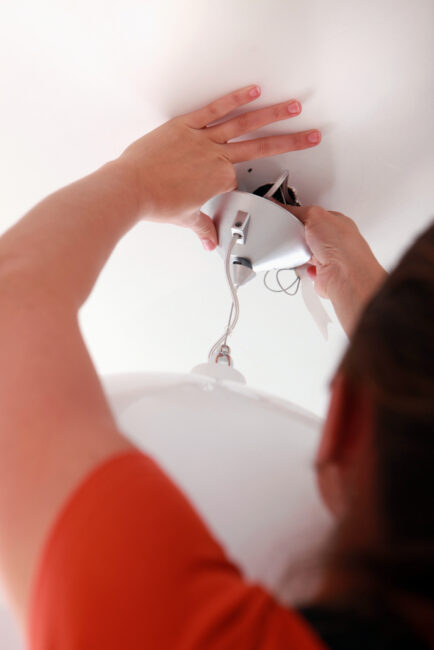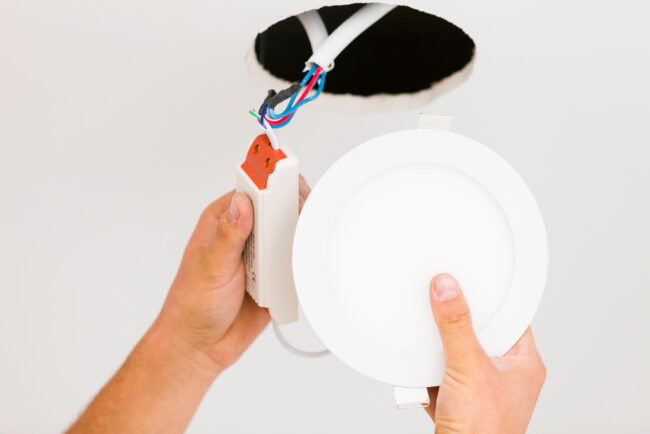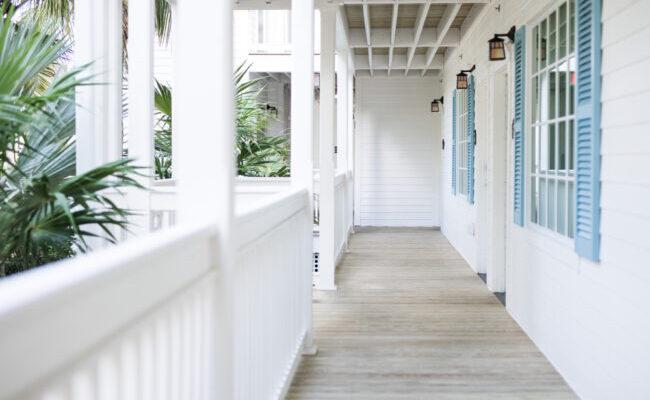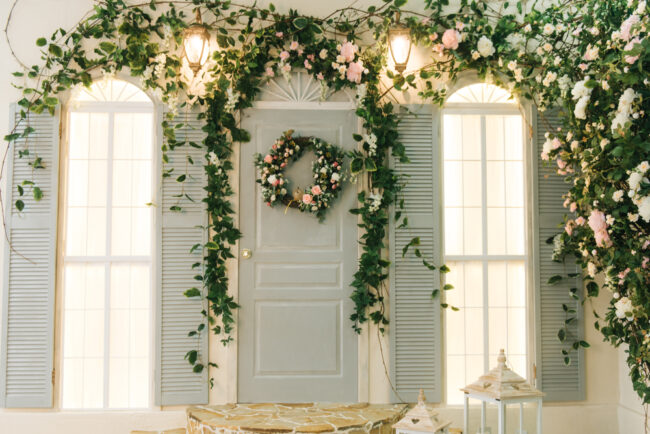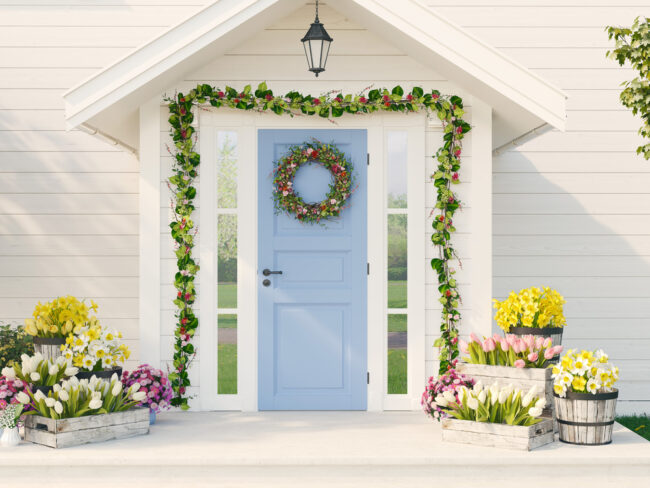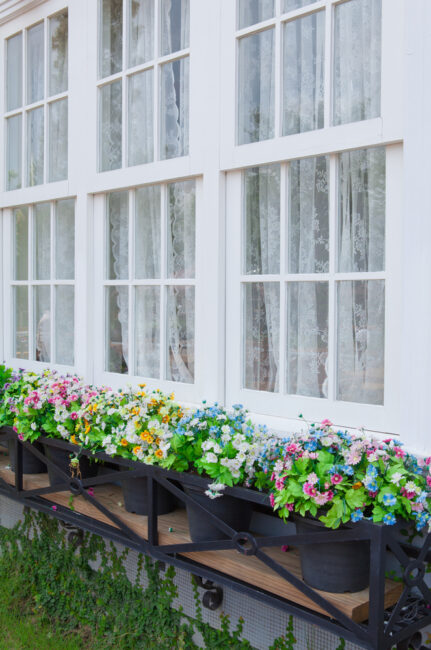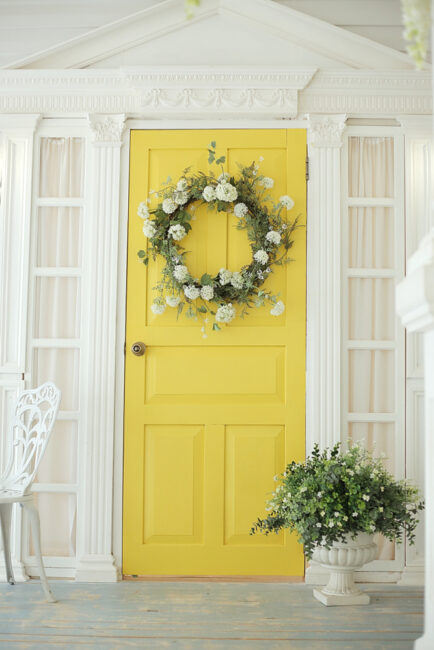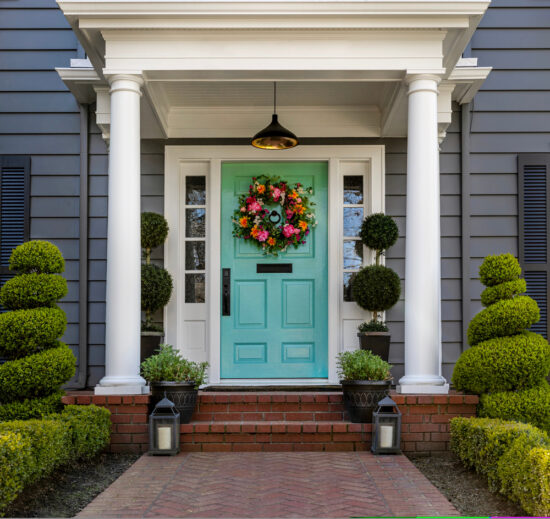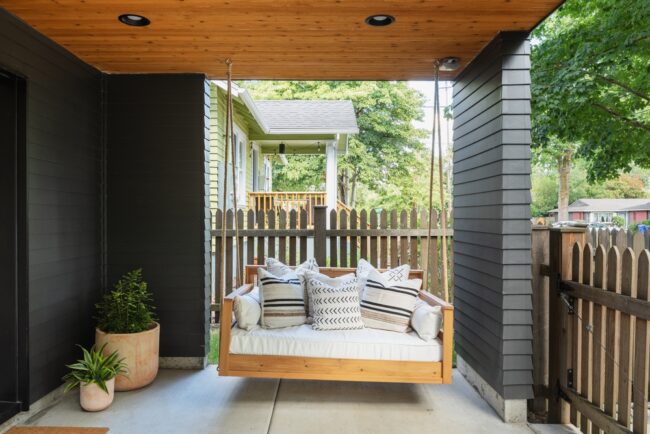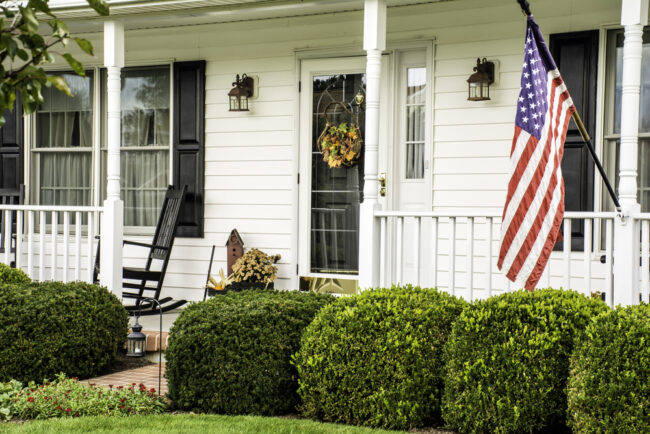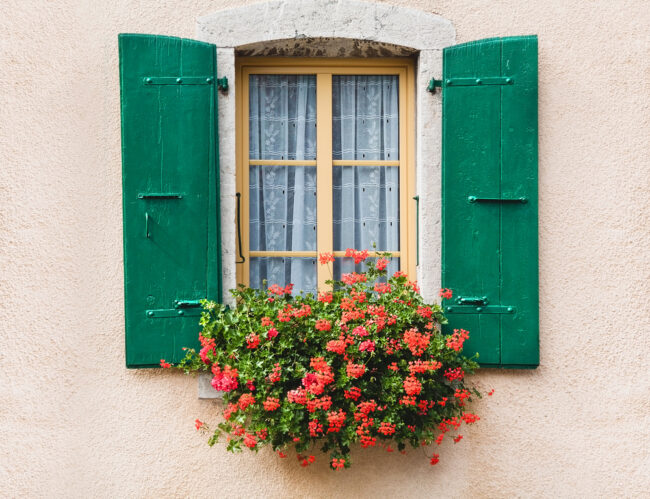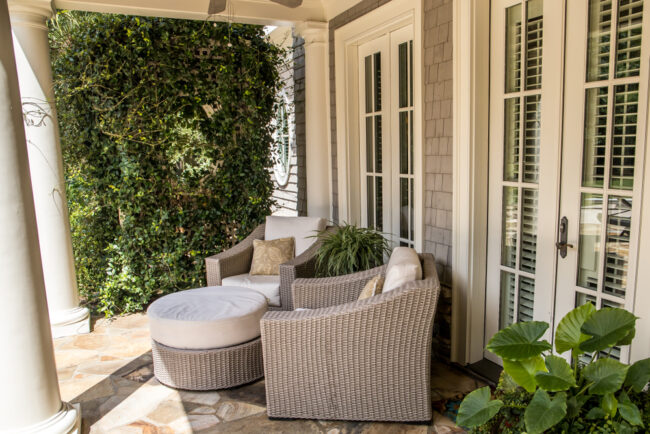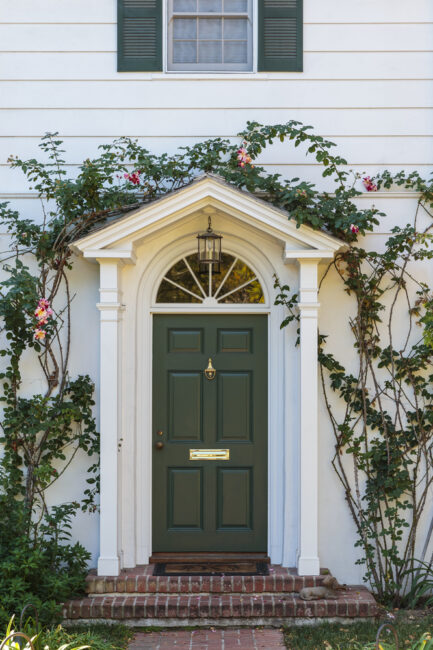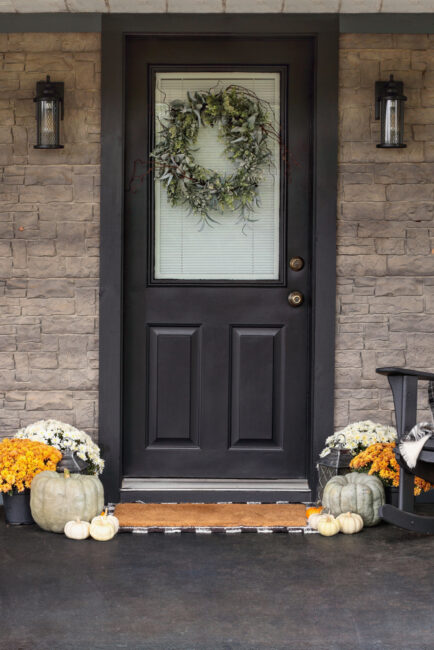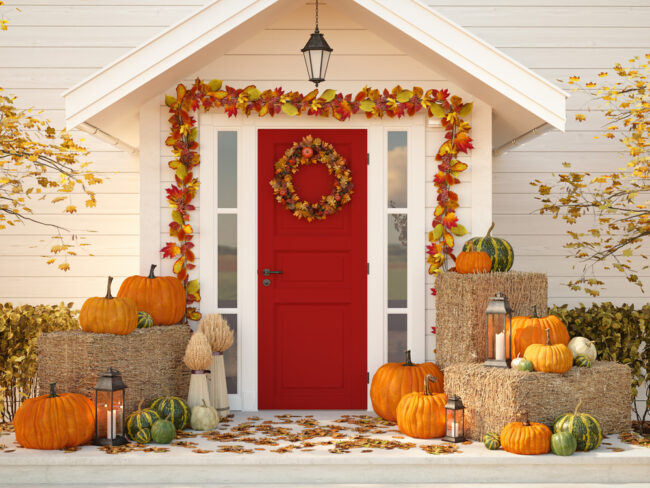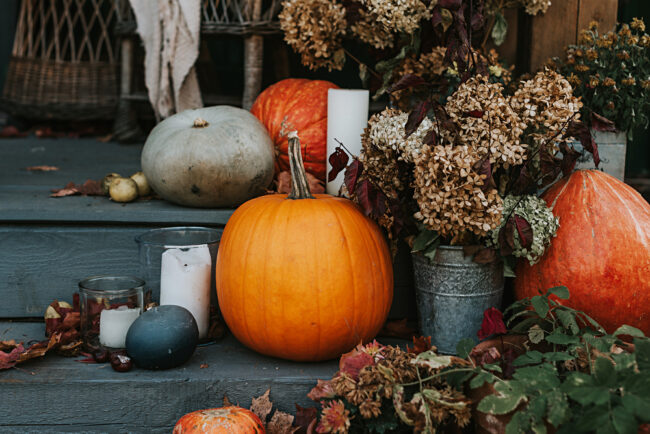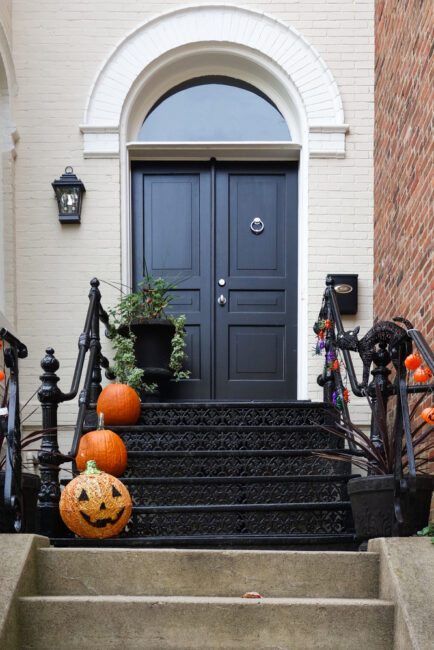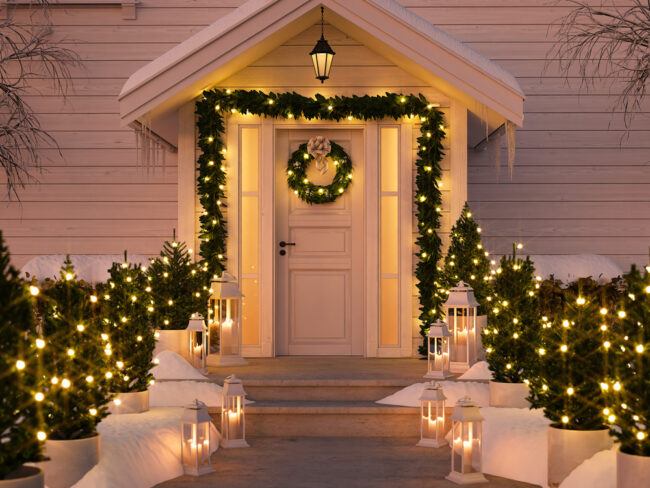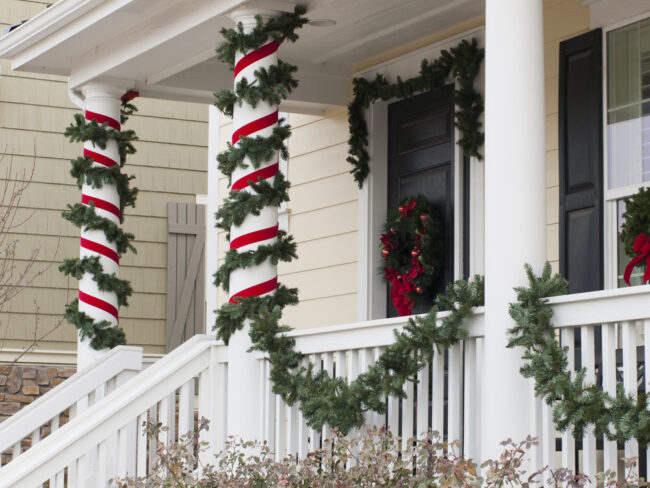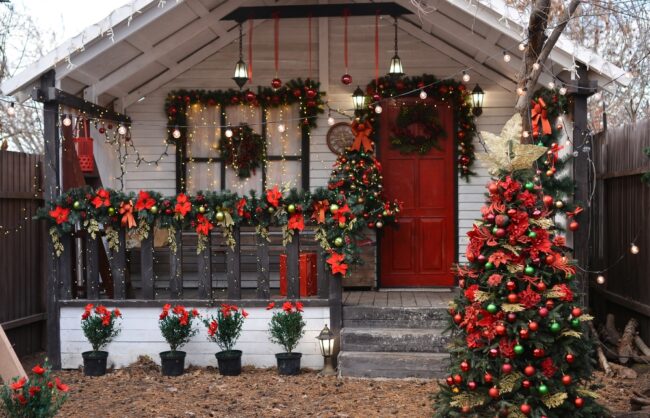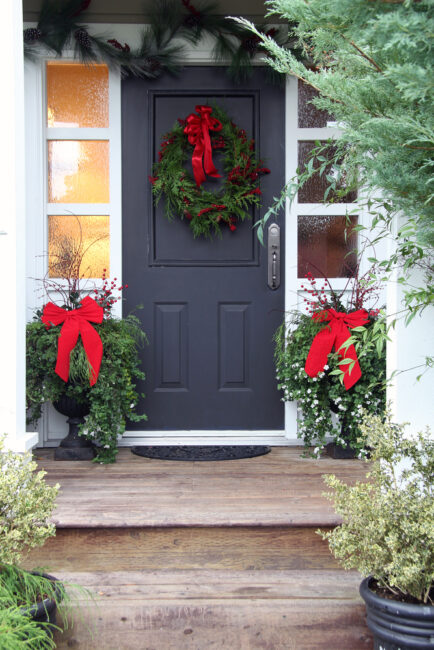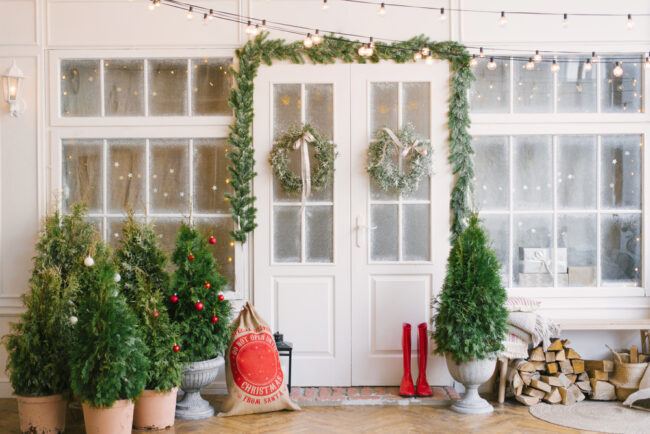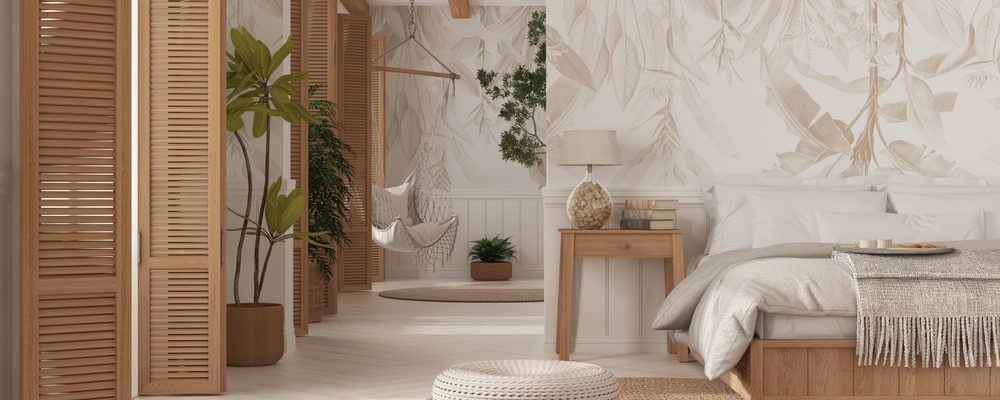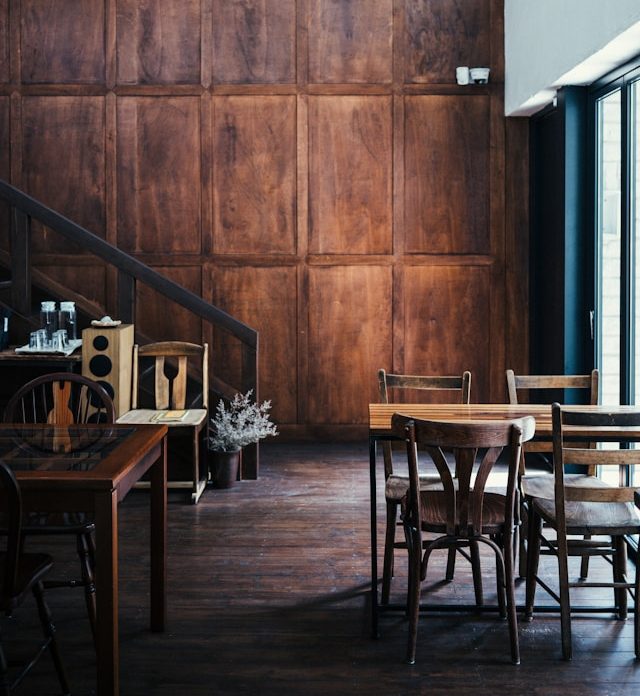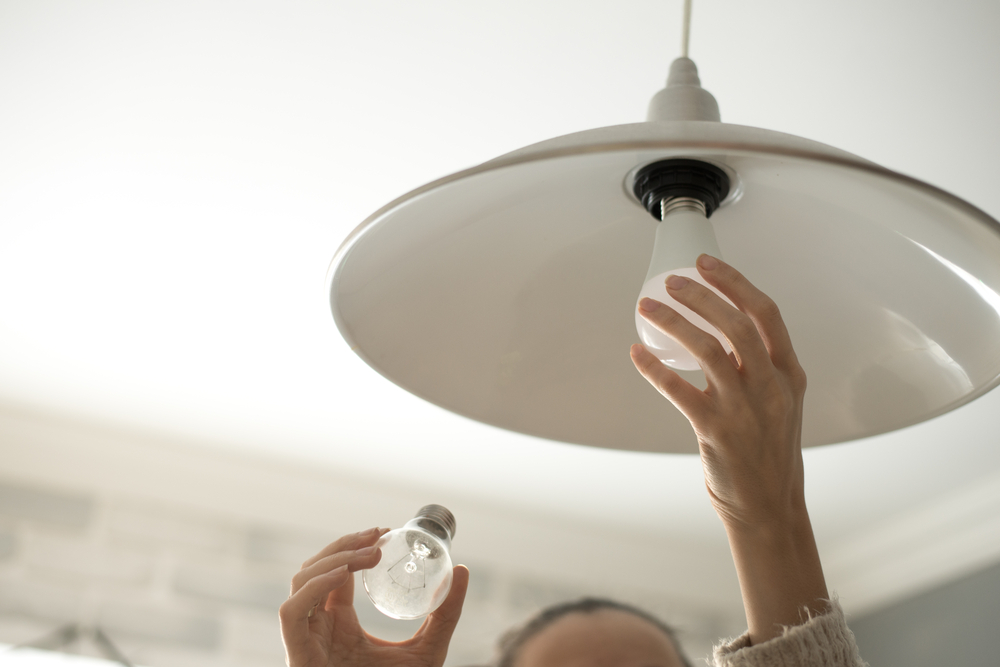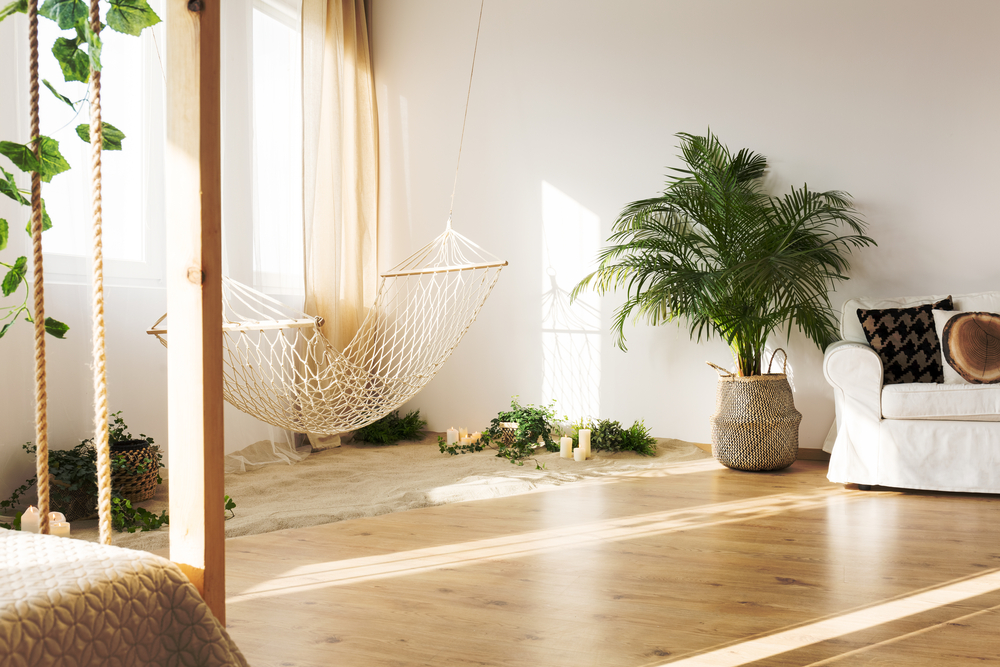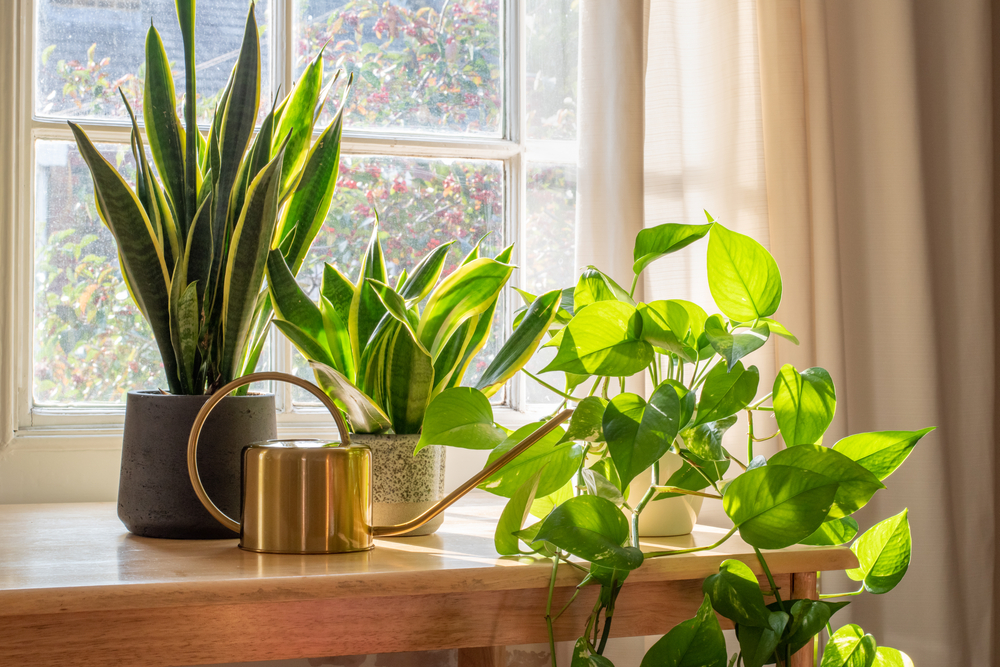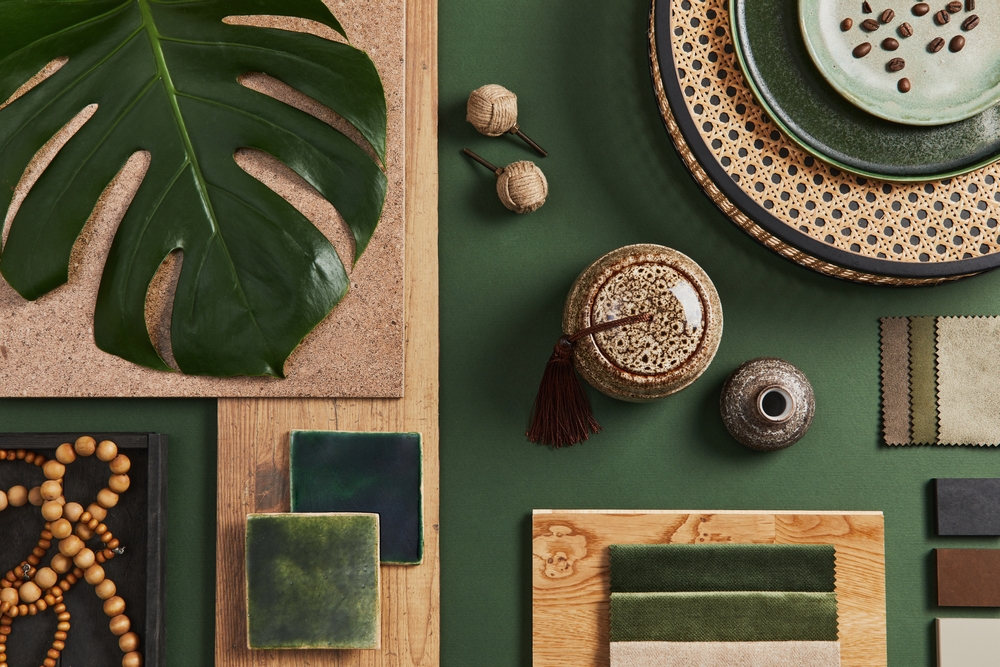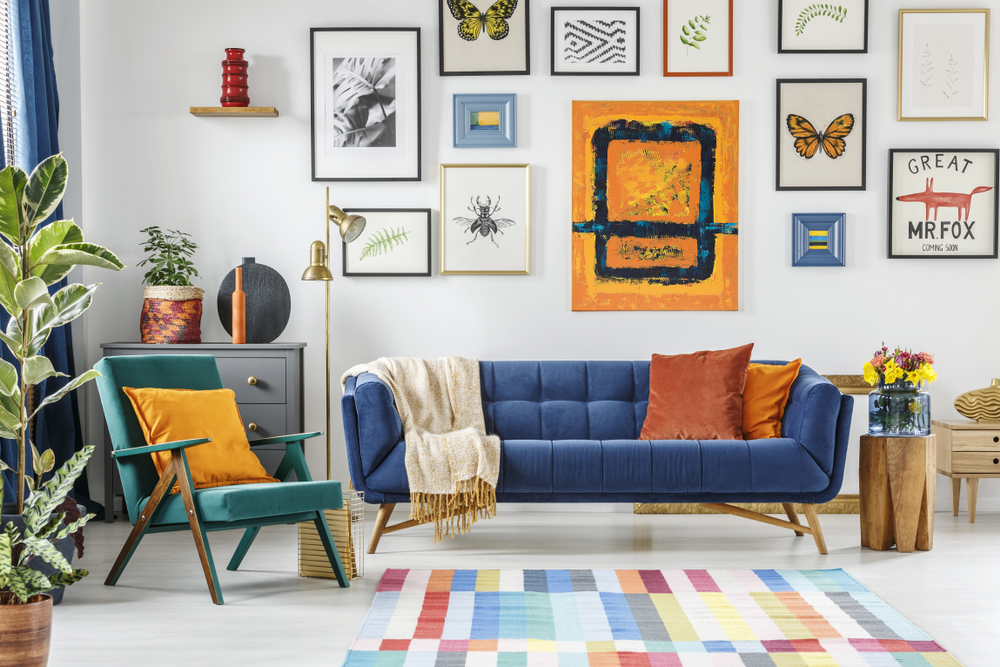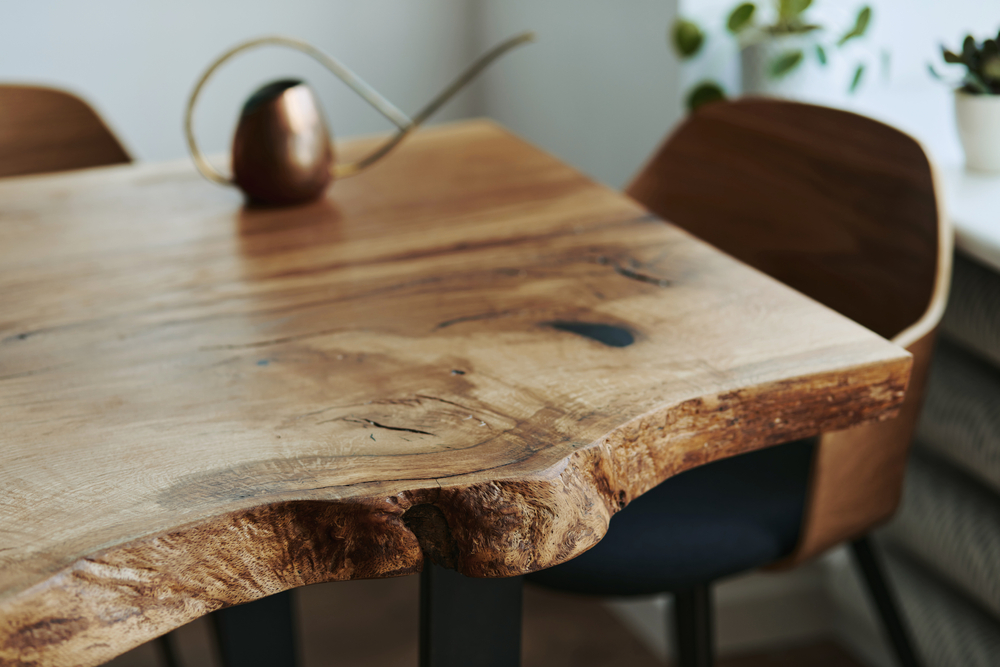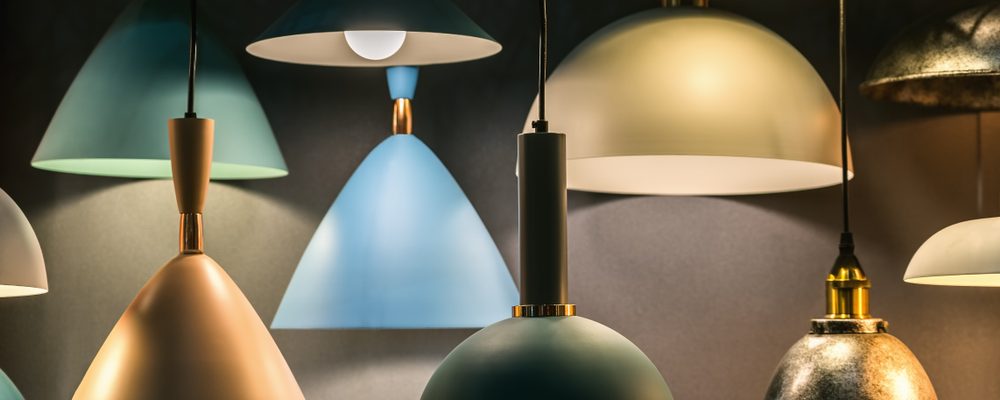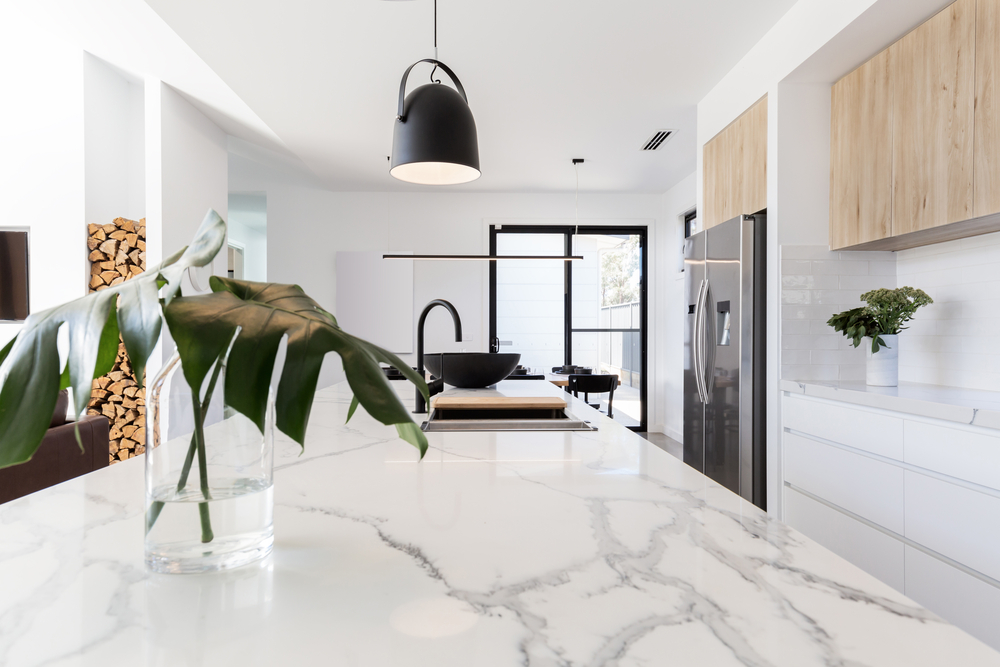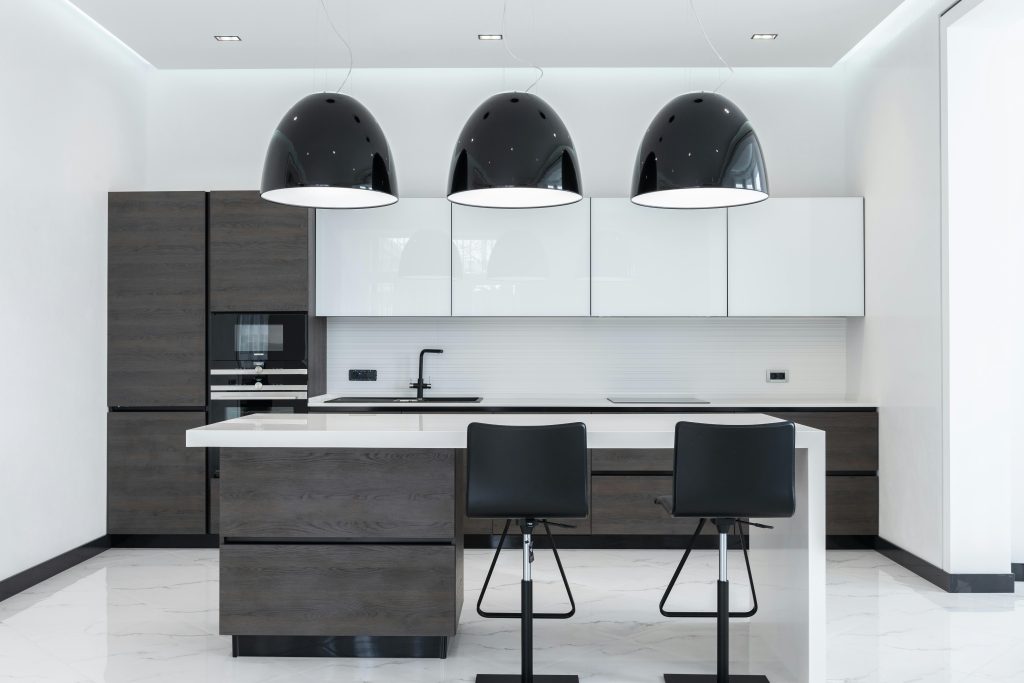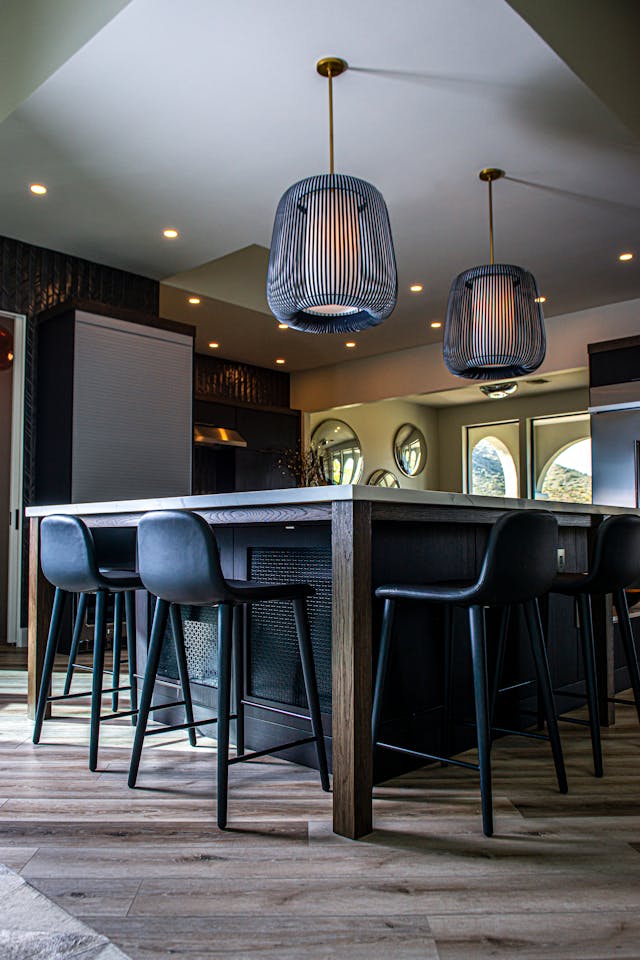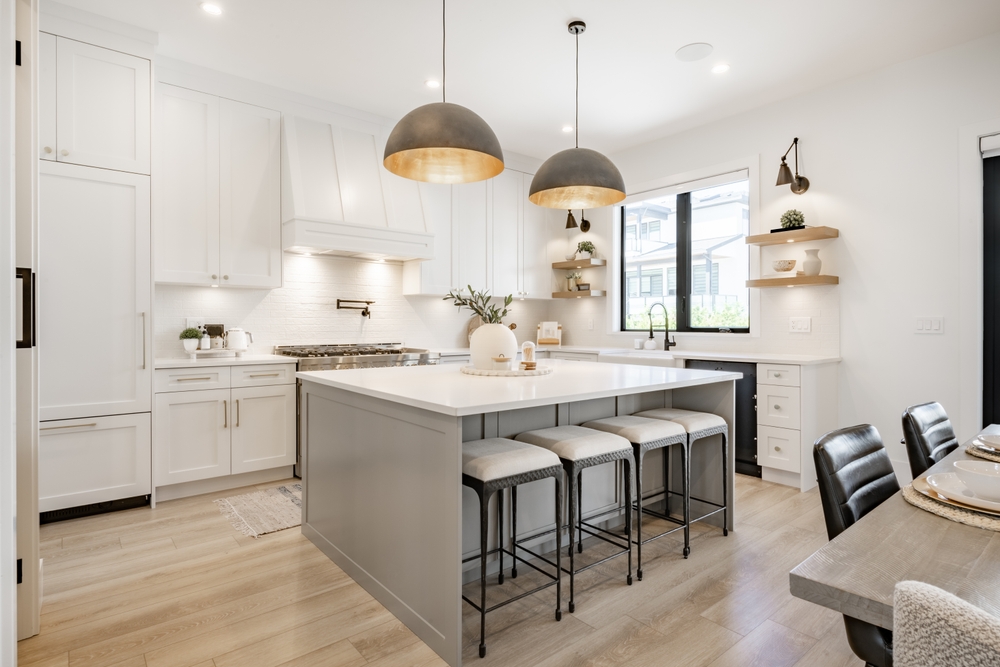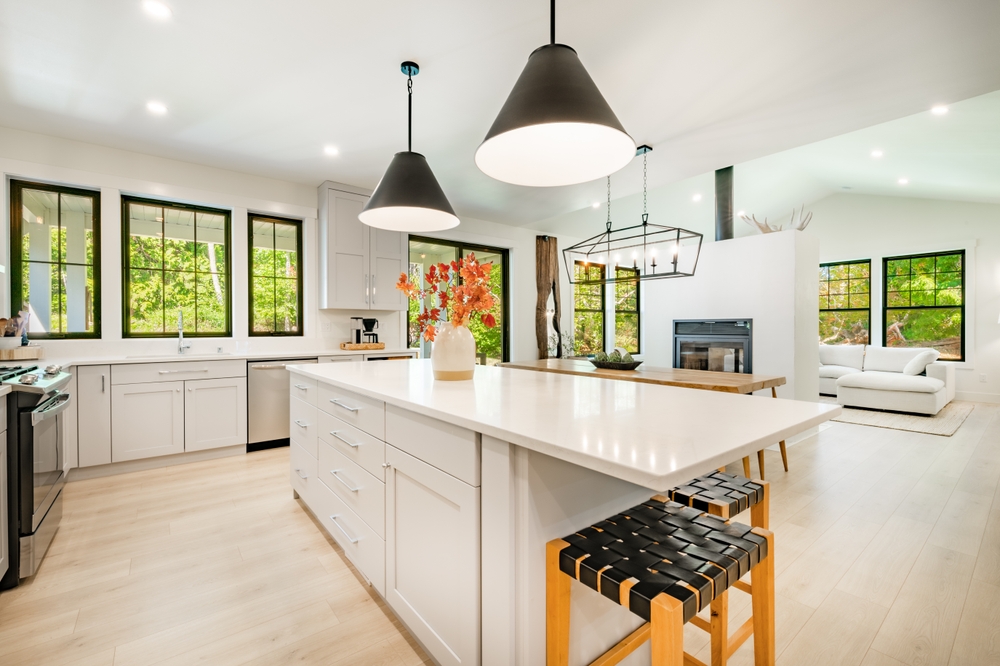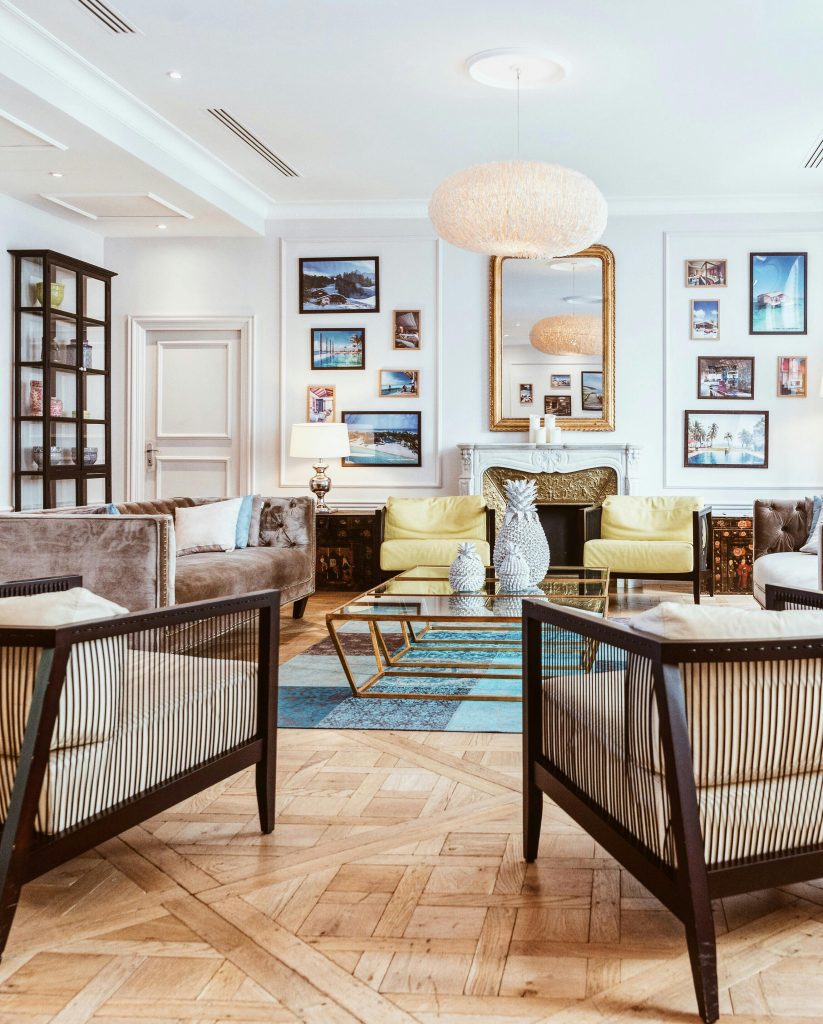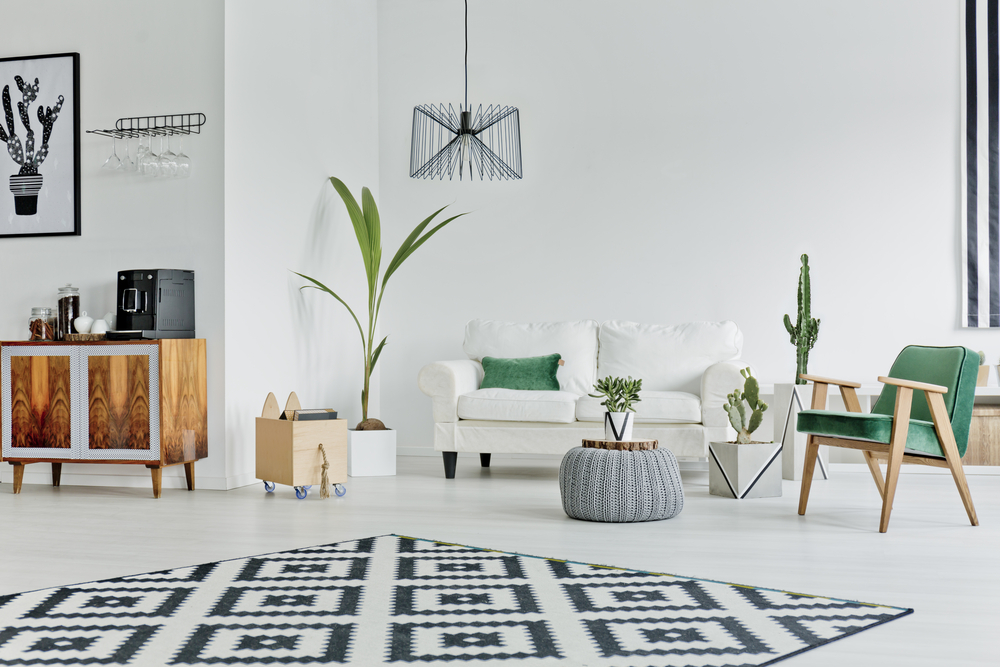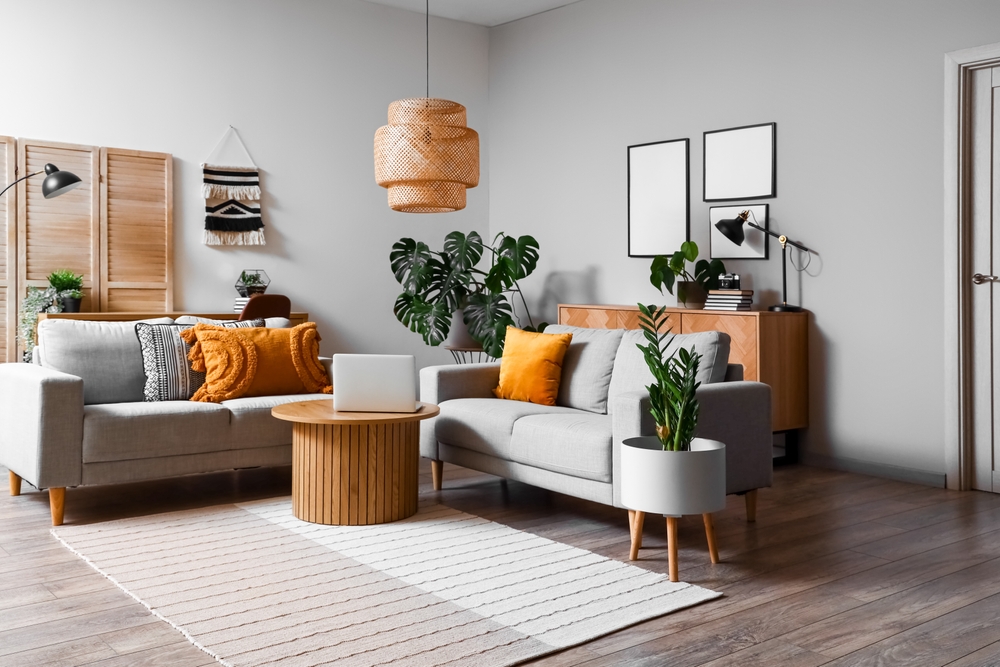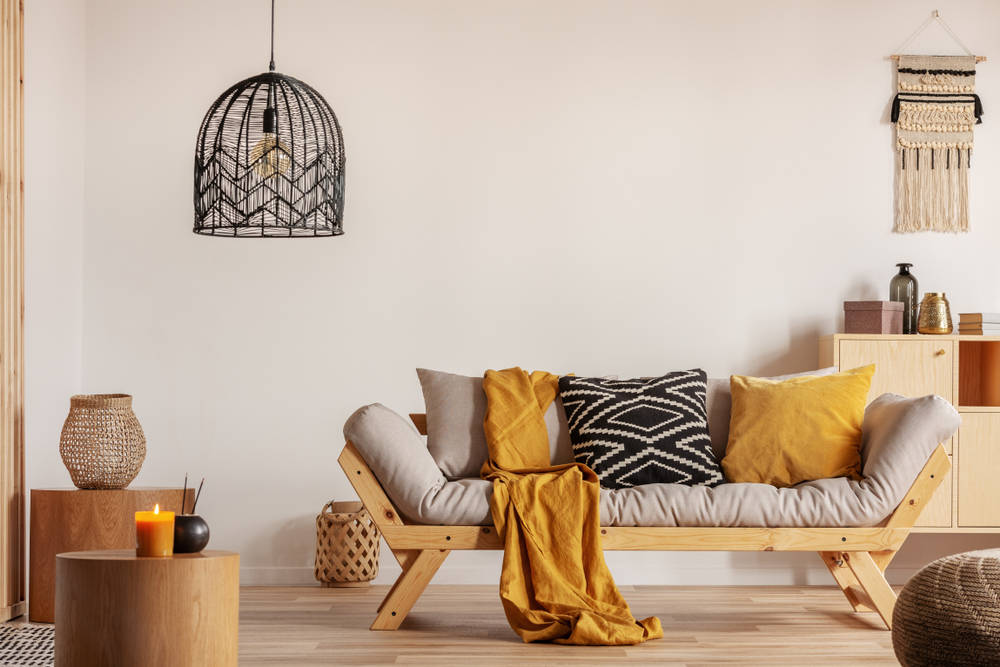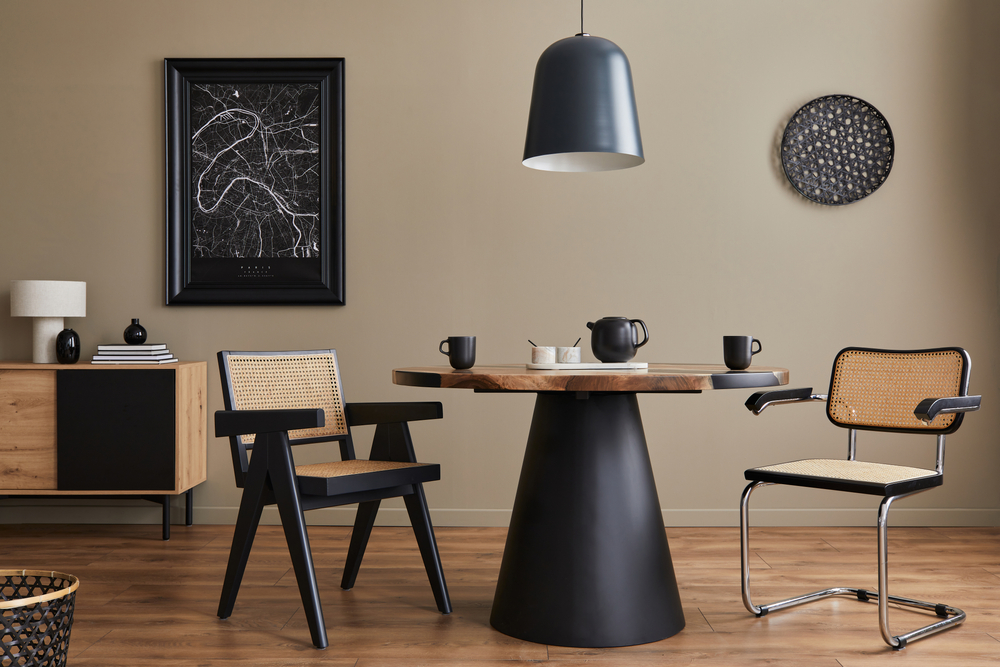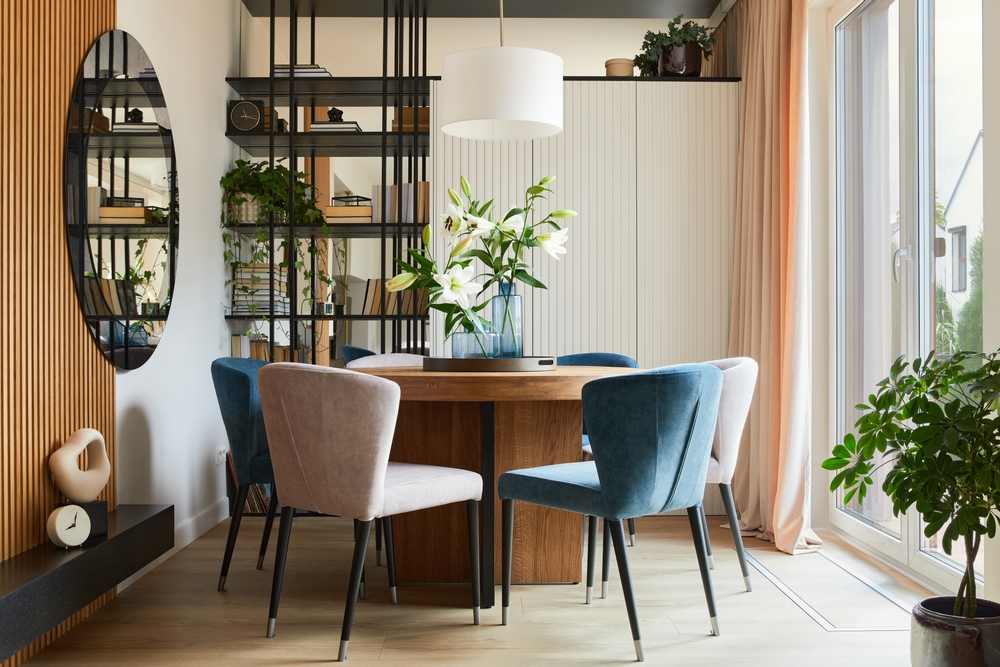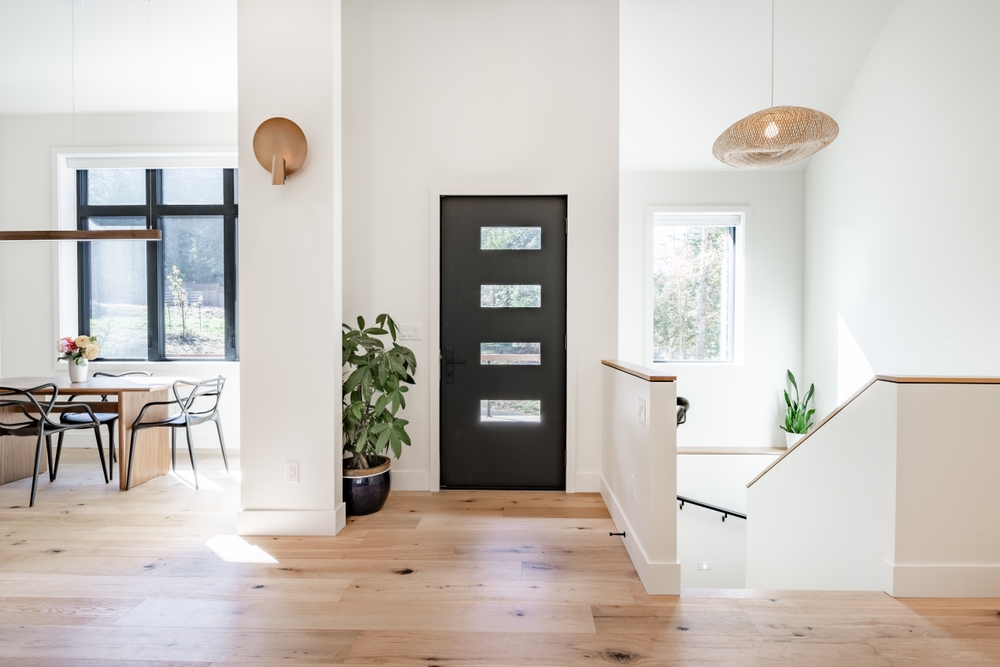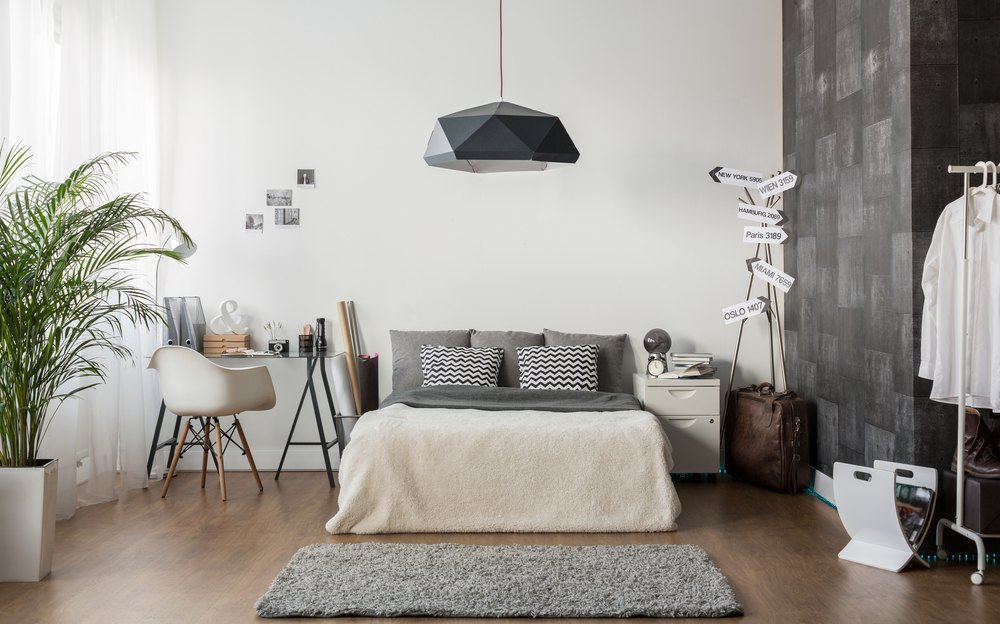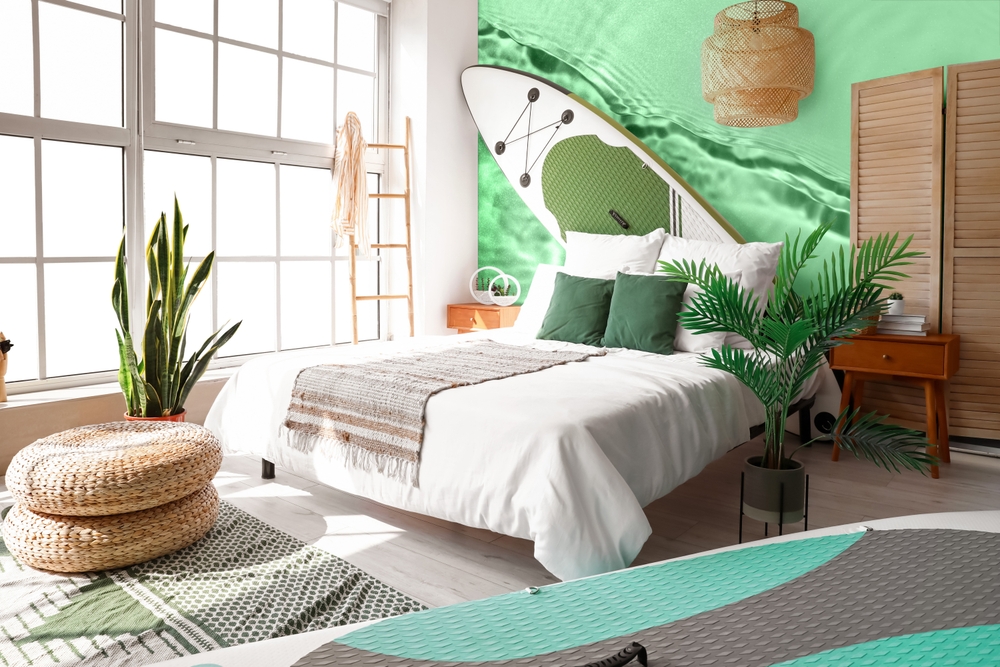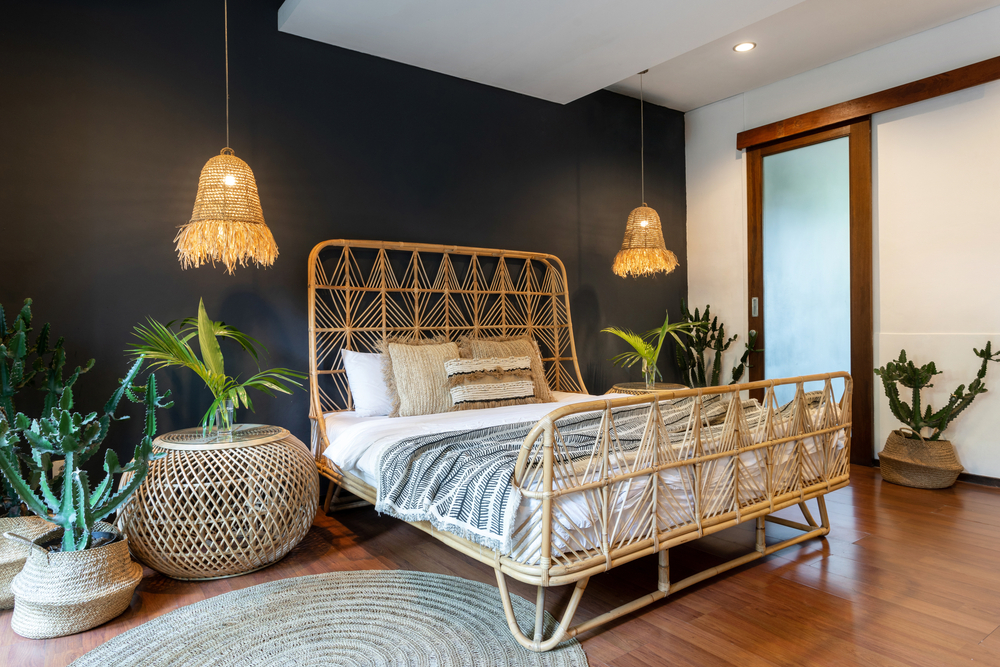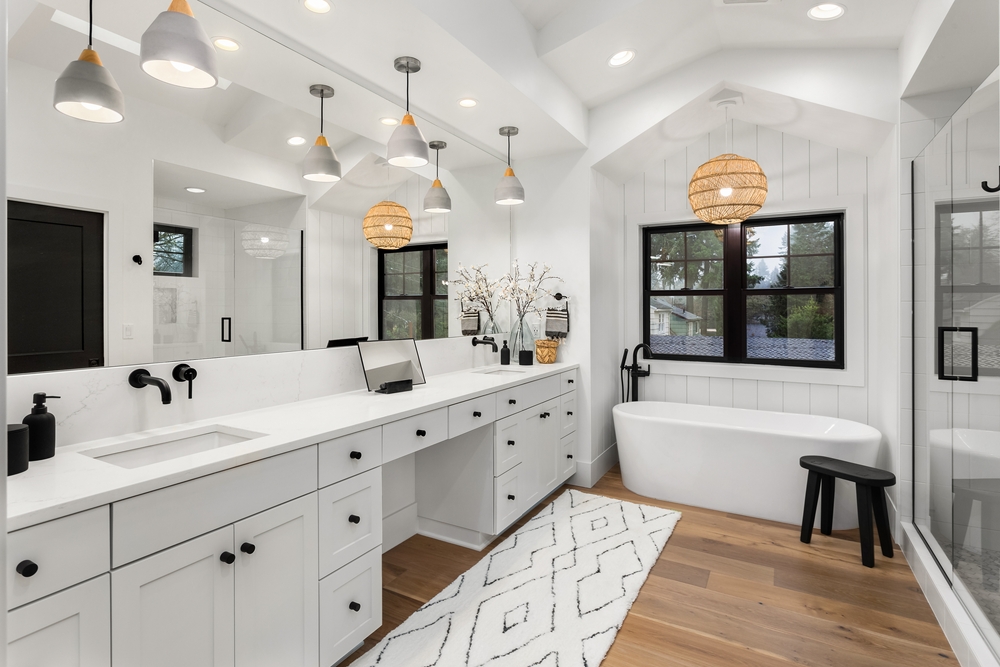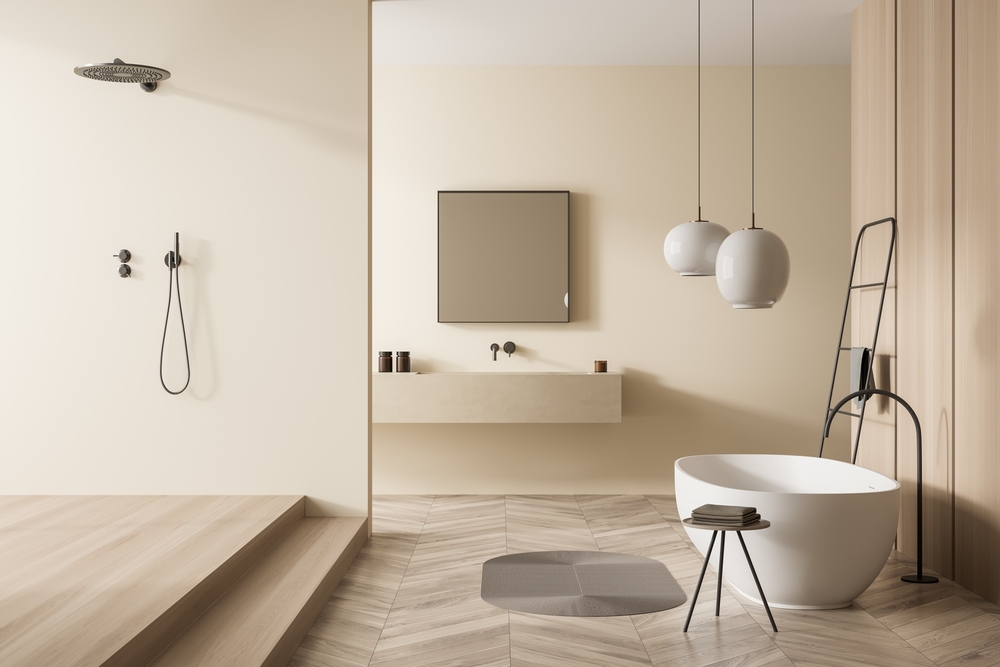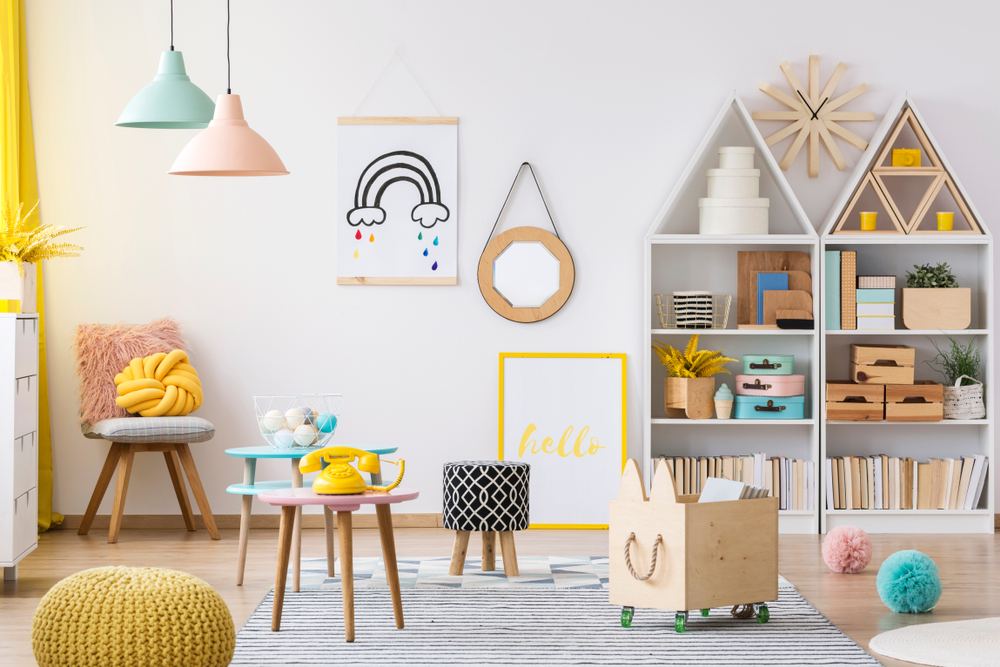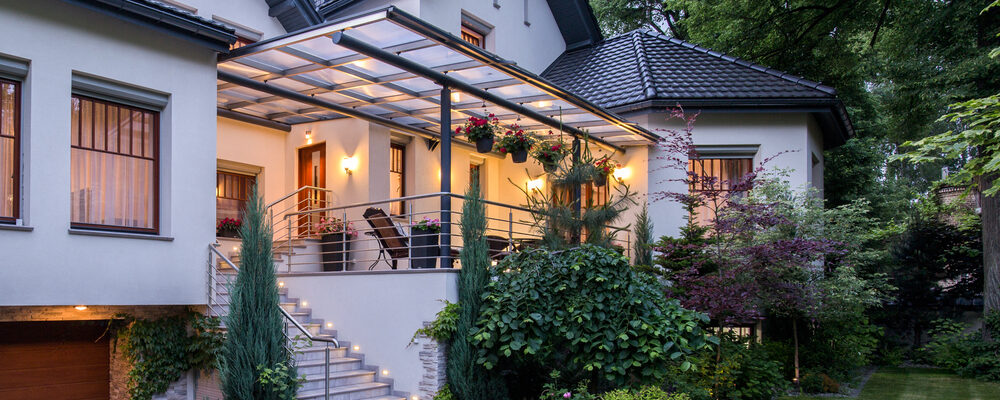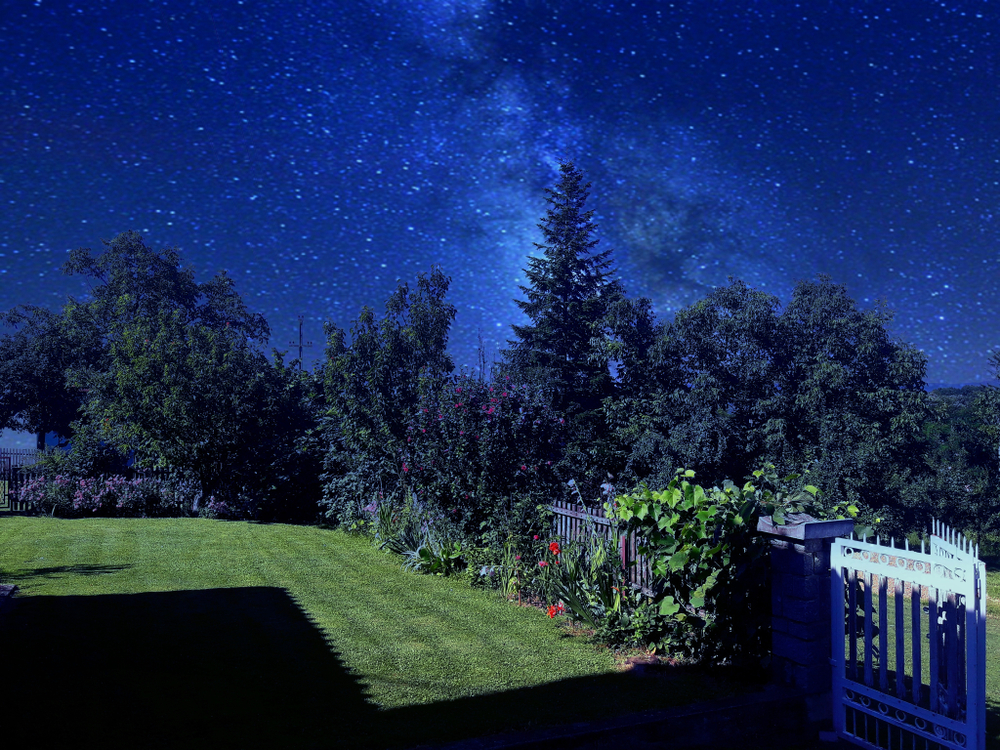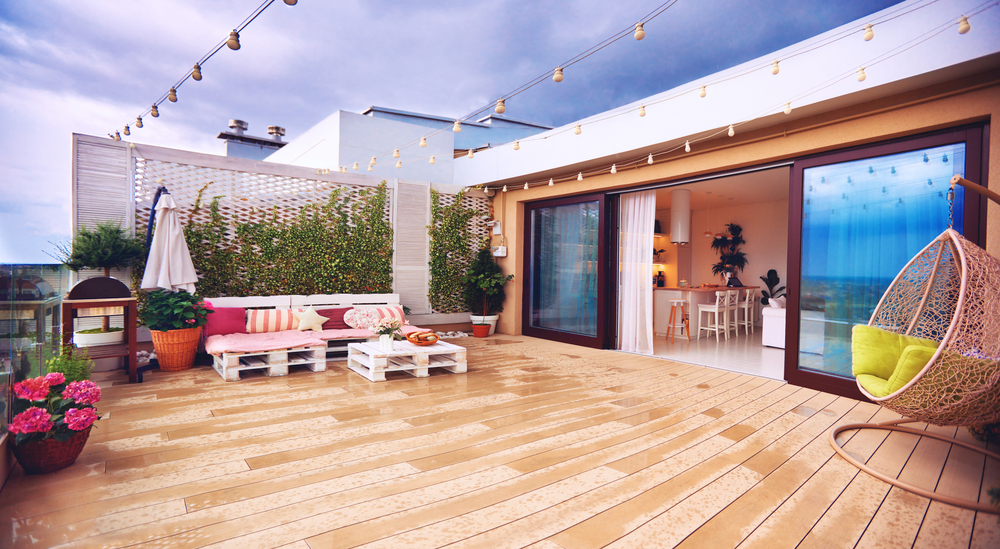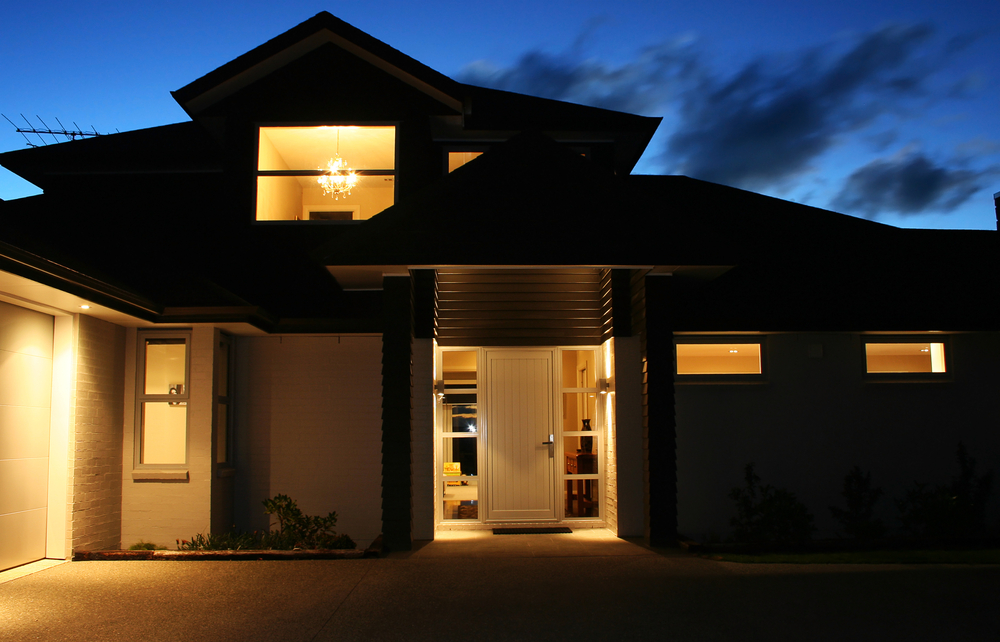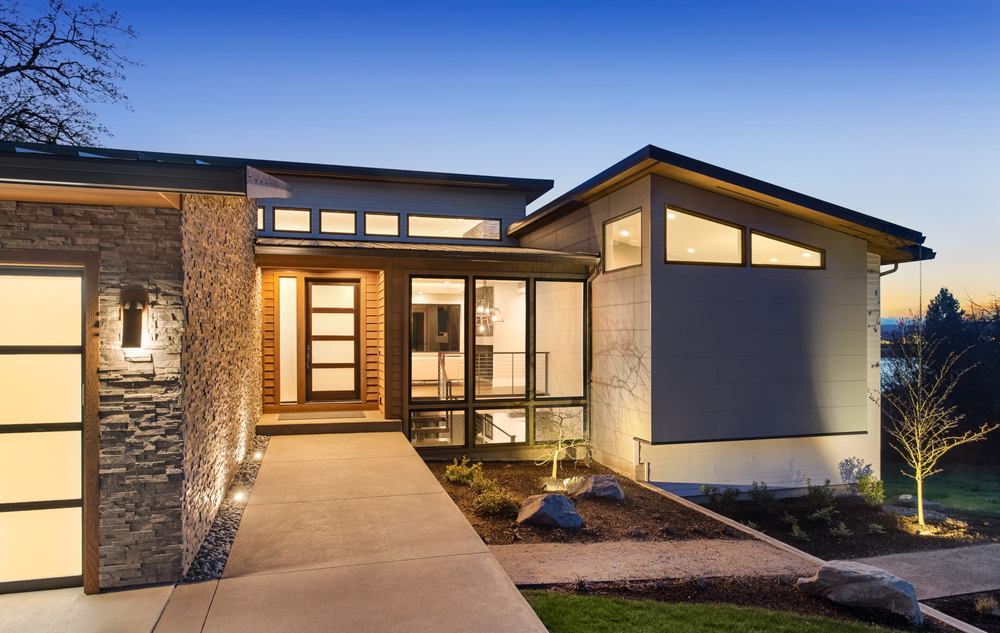When you’re designing your house, finding inspiration is key. Taking a step outside can give you a fresh perspective – there’s no better inspiration than mother nature herself! No matter what space you’re working on, drawing from the beauty of nature will make your home feel like paradise.
The combination of earth tones and natural materials in these rooms almost makes them feel more like they should be in National Geographic than a home decor magazine – and we mean that in the very best way possible.
Bathrooms
Picture yourself after a long day of work. You’re exhausted, and what you need more than anything is a moment to yourself. You finally get some uninterrupted time to sit in the warmth of the tub and it feels good. The anxiety melts away. Your bathroom can be a natural refuge from your stress. When you put a little effort into your bathroom, it’ll pay off!
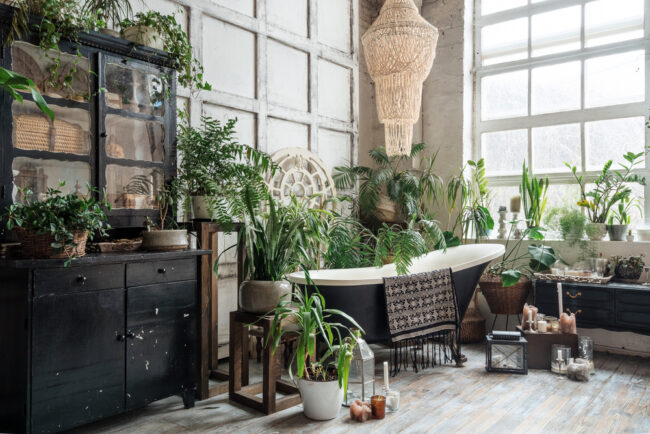
The owner of this room has a green thumb that brings the whole room to life. To complement the plants, they chose a macrame chandelier that’s uniquely fitted for this bathroom. Warm wood and wicker also feel right at home in this organic space. The black furniture and tub ground the look, bringing an effortless cohesiveness. You’d have a hard time feeling anything but relaxed here.
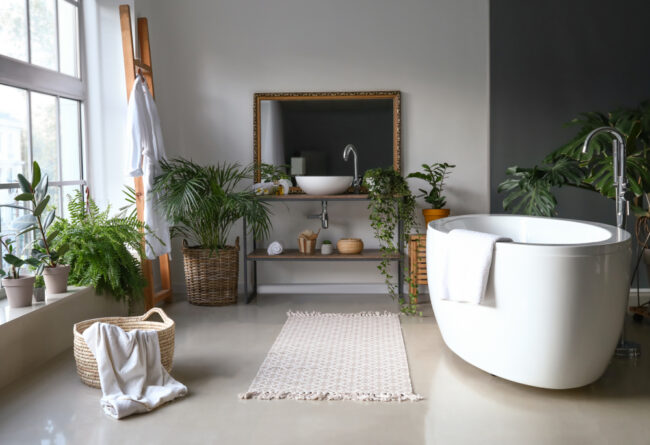
This light and airy space incorporates natural materials like wicker and terracotta pots. The foolproof combination of warm wood tones, green plants, and neutral, natural colors will always leave you feeling like you’re stepping into an oasis! This room is definitely a no-interruption zone.
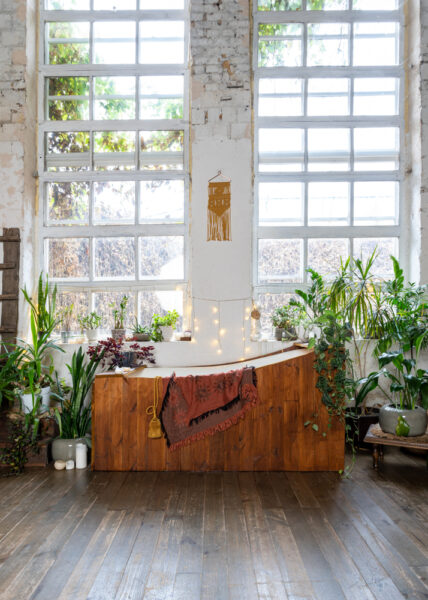
If it was possible (or ethical) to steal a bathtub, we’d be walking out of this bathroom hauling this one! The wood exterior is a nature enthusiast’s dream base for relaxation. The twinkling lights behind it are also a charming touch to give the bath a glow.
Living Rooms
The living room is the main hub of the house. It’s where work, relax, and entertain guests – you live here. Whether you choose a paired back approach or go full maximalist and pull out all the stops, make sure to include some natural materials to ground yourself and make the living room feel more like home.
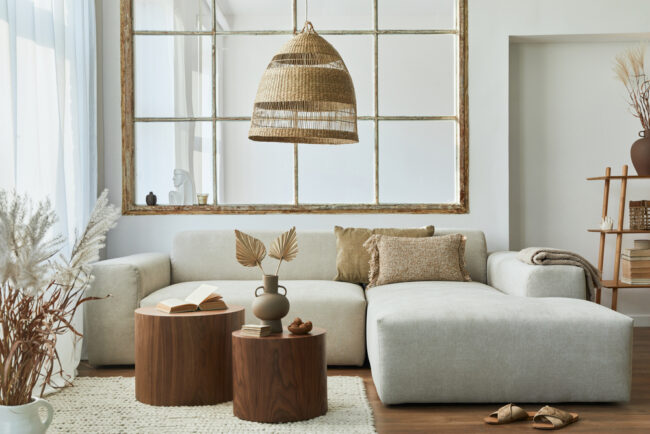
Neutrals are the star of the show in this living room. We love the texture the pendant light brings and how it coordinates with the mirror frame and the accessories in the room. The color palette may be limited, but each piece works together to create a neutral haven where texture is the star of the show.
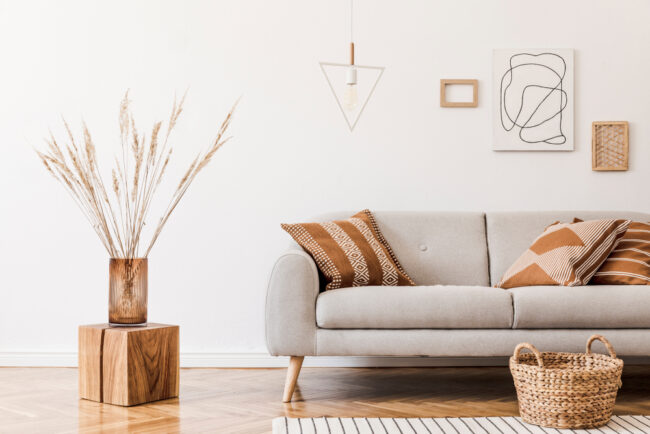
This nature-inspired design would work well in a space of any size. When you’re strapped for square footage, picking a smaller couch that will still accommodate your needs is a smart choice. A pendant light also shows creativity since it won’t take up any extra floor space. It’ll give you the ambiance for an intimate conversation or some light for reading. The texture of the wicker and wood here is also stunning. Adding burnt orange brings a tiny pop of color to make you feel extra happy!
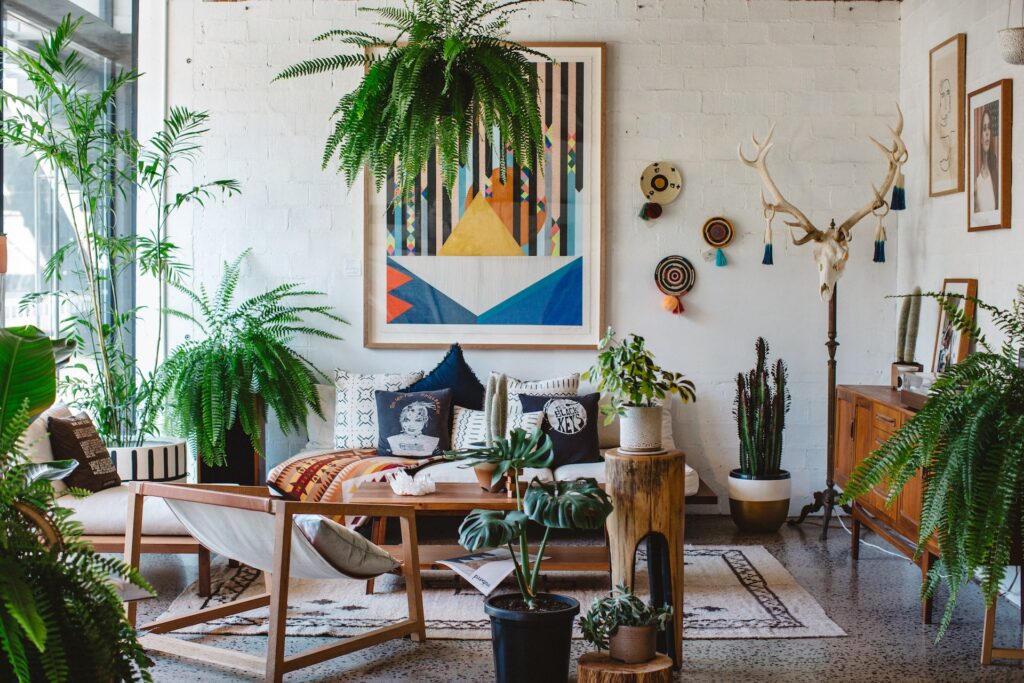
This colorful living room is oozing with style! Who said organic design has to be boring? We can’t help but feel insanely jealous of whoever owns this room. Everything here – the colors, textiles, plants, and warm wood furniture – is to die for. Don’t be afraid to go bold and bright if it makes you happy. This is a living room anyone would be lucky to come home to!
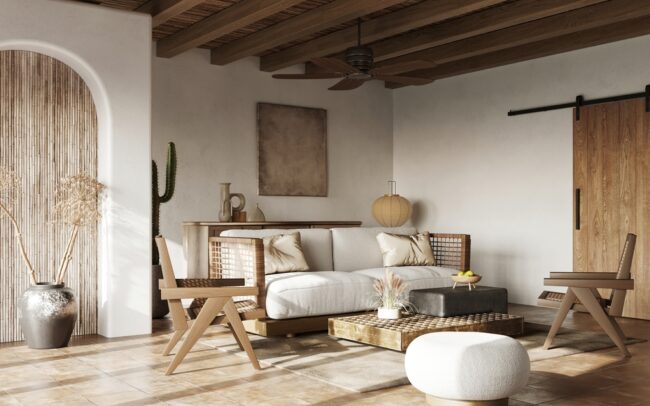
This living space uses nearly all natural materials and earth tones in its design to make a cozy conversation space. From the wood ceilings to the stone accents, the textures here are immaculate. Everything feels warm and welcoming. A wood ceiling fan matches all the decor and will give this homeowner an extra breeze on a hot summer day.
Bedrooms
The bedroom is the best place to be a little braver with your decor. It’s the place you should feel the most comfortable being yourself. Pick bolder earth tones and bring in all the natural materials to create a place that will allow you to be the best version of yourself!
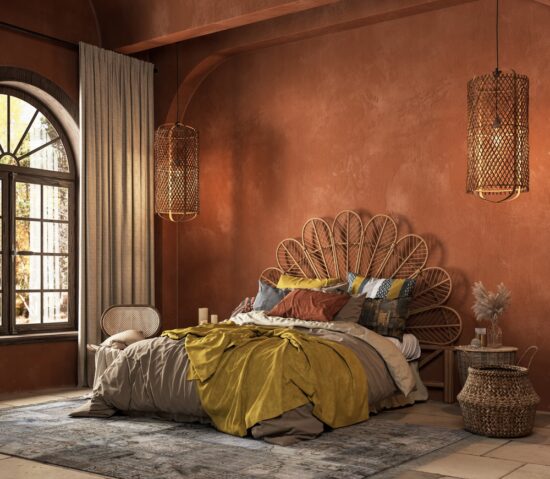
This cozy room pulls out all the stops. The way the headboard coordinates with the gorgeous pendant lights has our jaws on the floor! They give the room a natural glow and highlight that warm orange wall. To some a deep, rich color like this can be intimidating, but this bedroom is the perfect example of what can happen when the risk pays off.
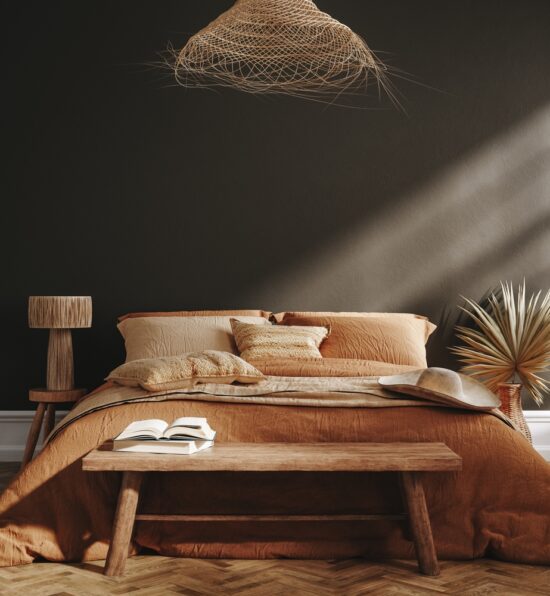
Going dark on the paint can be risky, but using light, warm colors to contrast it is a clever way to combat any heaviness and create balance. The pendant above the bed is a gorgeous focal point that ties in with the wicker and wood. A fixture like this gives off soothing, soft lighting that helps to prepare yourself for a good night’s rest.
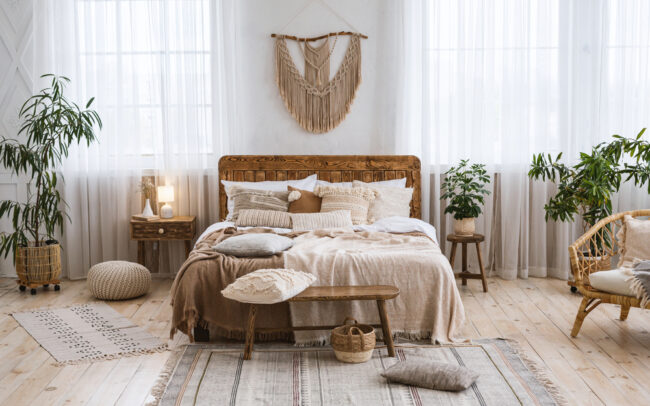
If light and airy is more your speed, use this room as inspiration. Natural textiles bring layers of texture and interest to this bedroom that make it feel cozy and inviting. The rugs and layered blankets make this space feel lived-in without feeling cluttered. Sheer curtains allow for lots of diffused natural light for a dreamy daytime vibe, and will reflect just the right amount of light at night to create a relaxing and comfortable atmosphere.
Kitchens
No matter your kitchen’s current style, a few extra touches from nature can make it a gathering space where you’ll love to spend time preparing and sharing food with your loved ones.
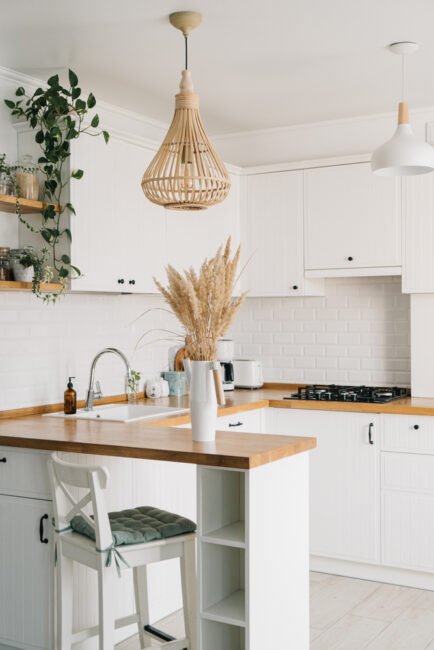
In a small space like this, details matter. The warmth in the butcher block counters and floating shelves stands out against the stark white of cabinets, creating a sense of balance without filling the space up with accessories. When space is small, a single bold choice is a great way to give it some personality – these mismatched pendants do just that! And of course, no nature-inspired space is complete without a little green. In a space full of hard lines, this pothos softens the edges just a little – and it’s perfect for the out-of-the way nook in kitchen since it won’t require much light.
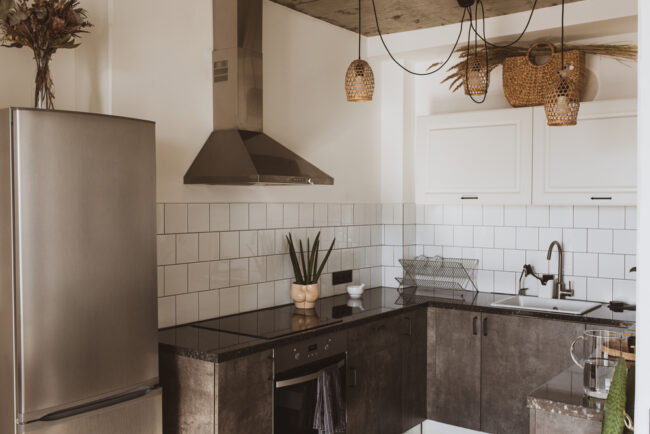
Going with darker textured cabinets was a bold move here. They almost look like they were carved straight from a mountain! In another space, they might look more industrial, but with the wicker pendant and basket, the white tiled backsplash, and the plants for accessories, it gives modern organic. The sharpness of the hard edges and metallic textures is softened by the natural textures and shapes throughout the space, like the draped pendant lighting – a smart choice that balances the design and makes it easier to see what you’re doing while you prep dinner.
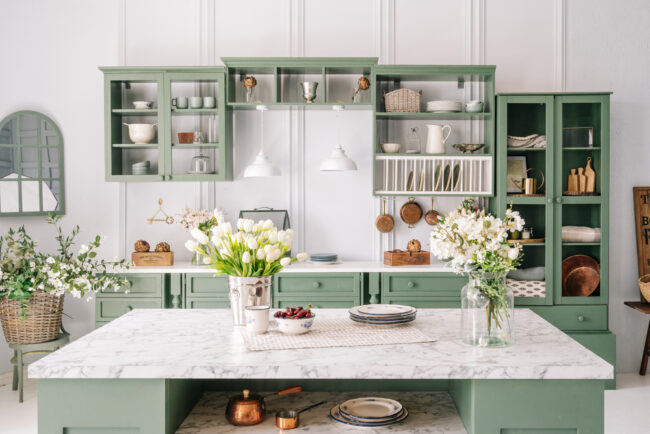
This kitchen is a marriage of light and airy and organic design. The green styled cabinets are perfect for storing the most beautiful cookware and dishes. Adding fresh flowers makes a kitchen feel fresh and beautiful. However, the icing on this wedding cake is the lighting! Those cute white pendants and this kitchen are a match made in heaven. They fit the space perfectly and will give you some much-needed task lighting.
Nooks
Almost everyone has that spare corner in their home that they just can’t quite figure out what to do with. Adding a seating nook for reading or working one of our favorite tips to make a space feel cozy and welcoming.
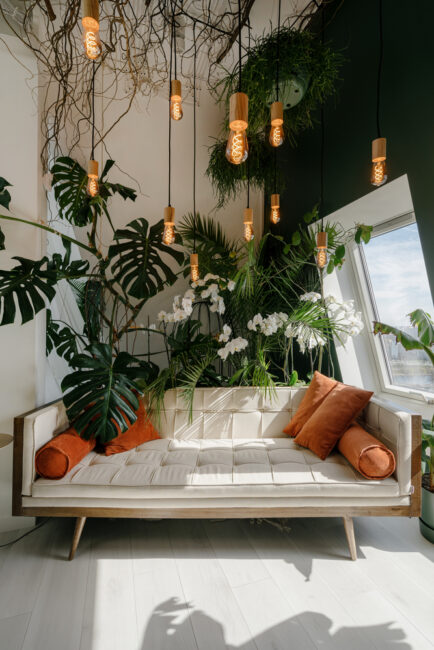
This little nook looks like Shangri-la in the middle of a house! Get cozy with a book and a blanket or just take a little rest here for some mid-day rejuvenation. Everything about this leans into the wildness of the natural world. Even the lighting is freeform and organic, these hanging pendants make this space feel like magic and will give you light to read no matter the time of day.
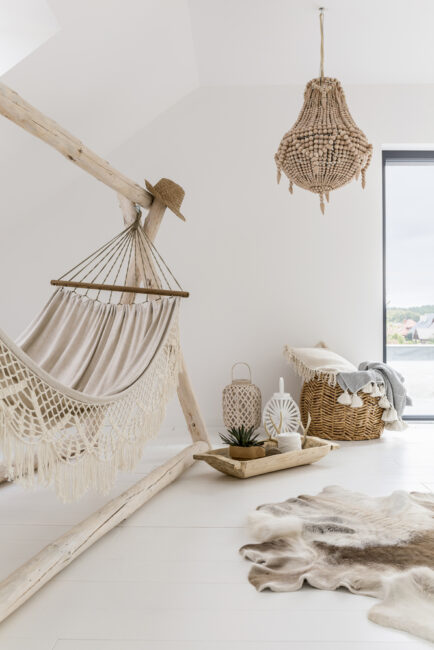
This boho-coastal nook is just what the doctor ordered for some me-time. We love a good hammock – and this one is just begging to be relaxed in. The driftwood frame with the macrame hammock turns this space from an empty white corner into a light and airy refuge. The beaded chandelier is an unexpected twist that ties perfectly with the accessories, making this nook feel like it’s just a few steps away from the beach.
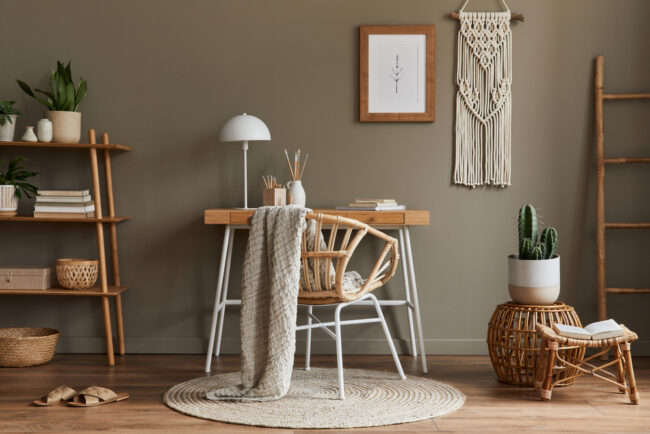
We can tell every element in this picture was chosen intentionally because it works together so well. From the wood and wicker furniture to a neutral color palette with a grounding green on the wall, you can’t get more organic than this! The dome desk lamp in white is a smart choice for task lighting – its small footprint doesn’t eat up work space, and the height and color make it pop against the dark wall behind it. This work nook may be small in size, but not in style.
—
Using an earthy color palette and natural materials in your design is nothing short of gorgeous when it’s done well. We love this trend and want to help you create it in your home. Come visit Armstrong's Lighting and show us what inspires you. We’ll help you the find the perfect lighting solutions to create your own natural sanctuary.
